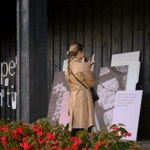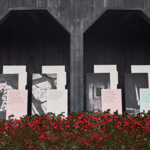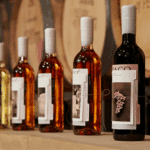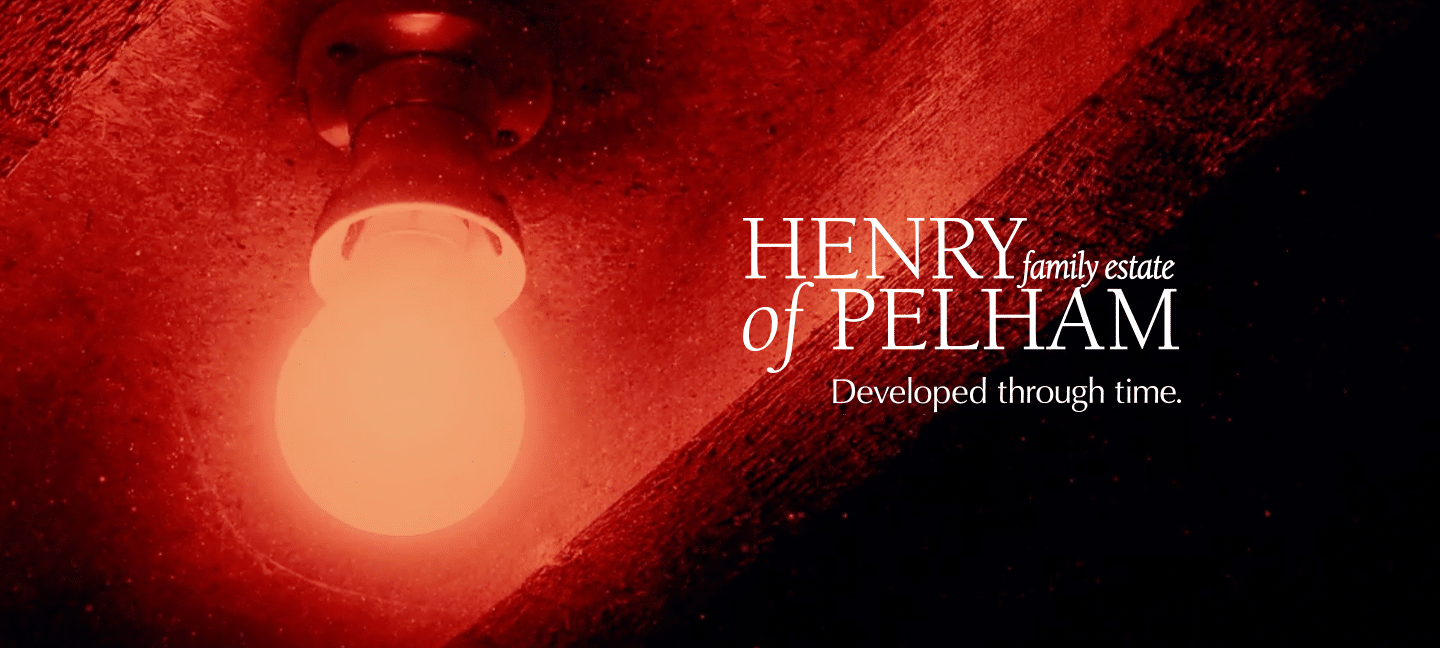
It took us over 200 years to develop our wine.
We used that same wine as a photographic developing agent to tell our story.

500 bottles. 200 years of history.
Printed across a series of 50 unique wine bottles, each photo invited wine lovers to explore the story of Henry of Pelham, year by year, bottle by bottle. It’s like a Wikipedia entry you can drink. The photo bottles were divided up into different eras throughout our 200-year history, from the 1780s until the present day.
Cellar Dark Room
As part of the experience, we converted our basement wine cellar into a fully functional dark room, where wine lovers could put on a set of aprons and gloves, and develop their own photos using our wine.
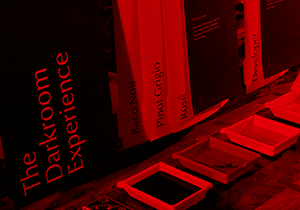
Developed Through Time Gallery
Explore our wine-developed photos and dive deeper into the Henry of Pelham story, from the founding of the vineyard by our namesake Henry Smith, to the modernization of our winemaking by the Speck brothers today.
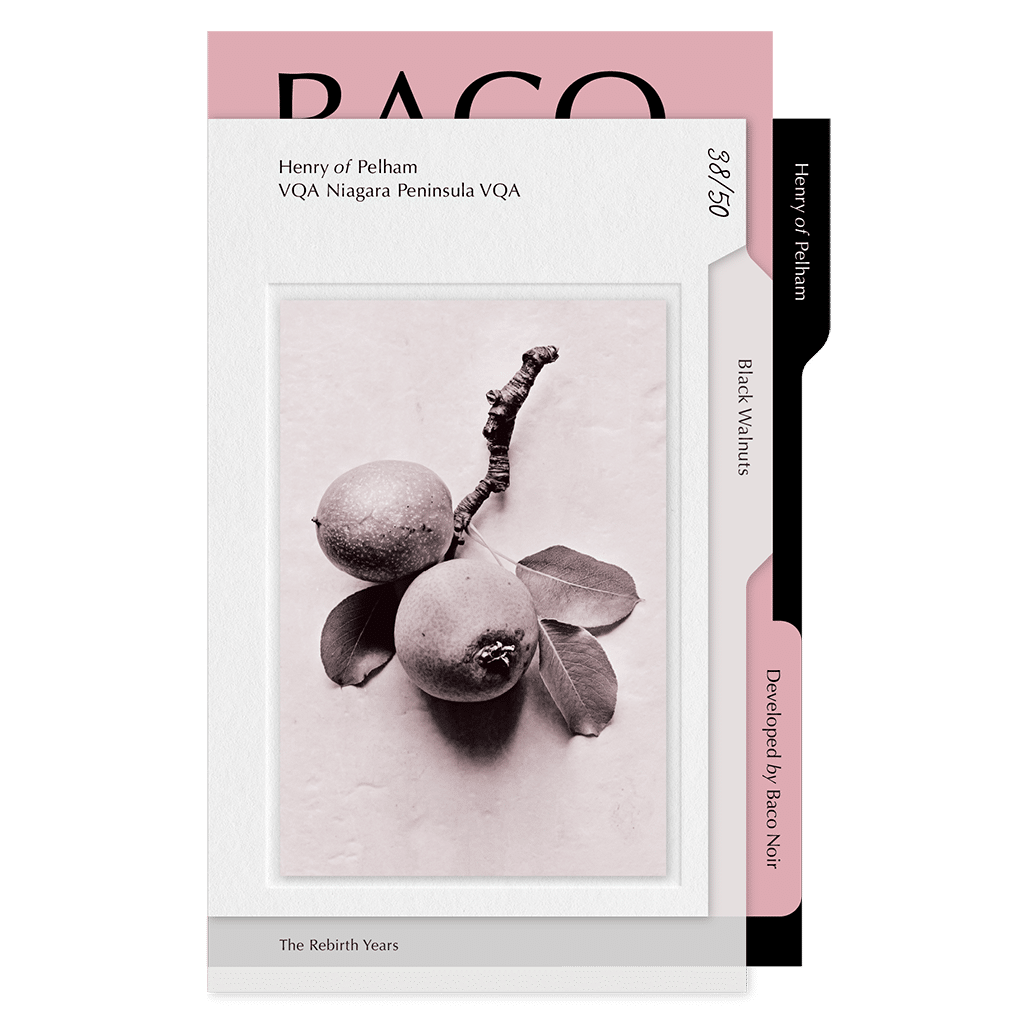
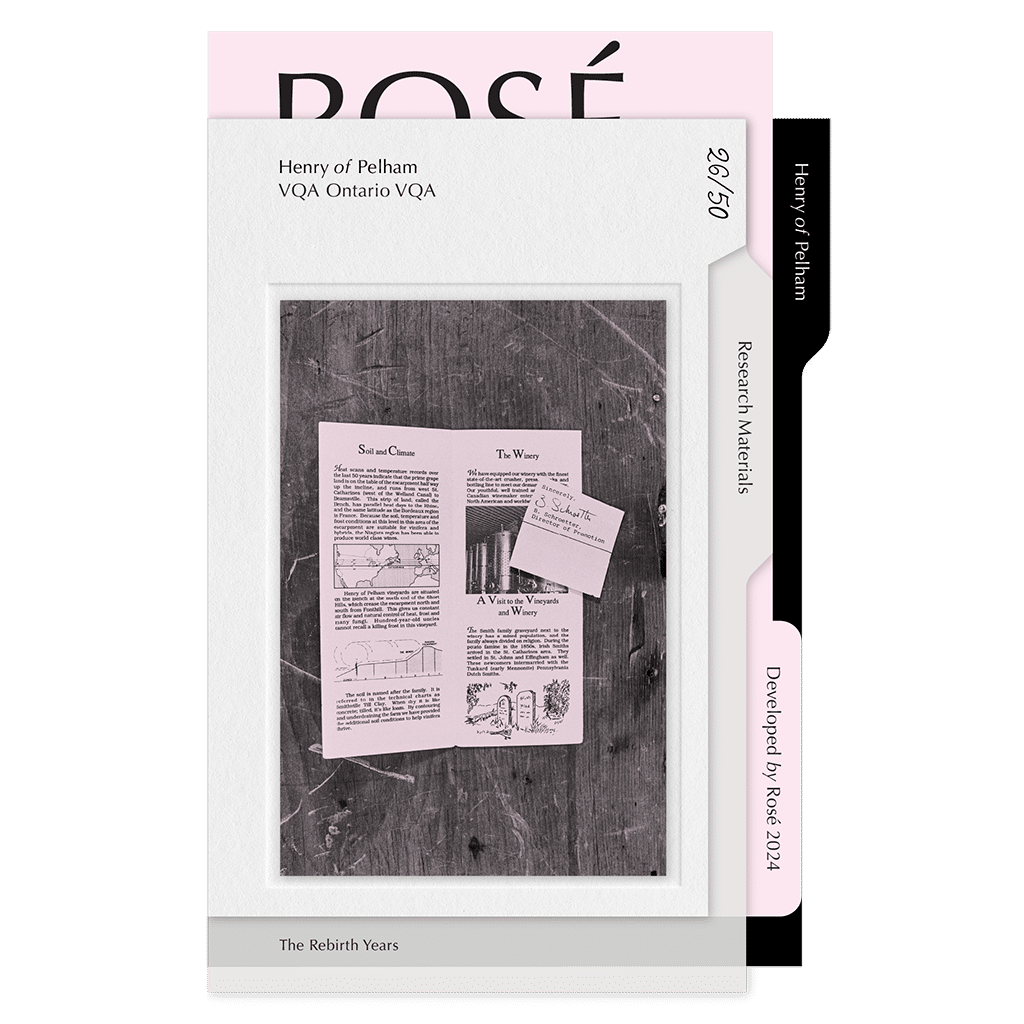
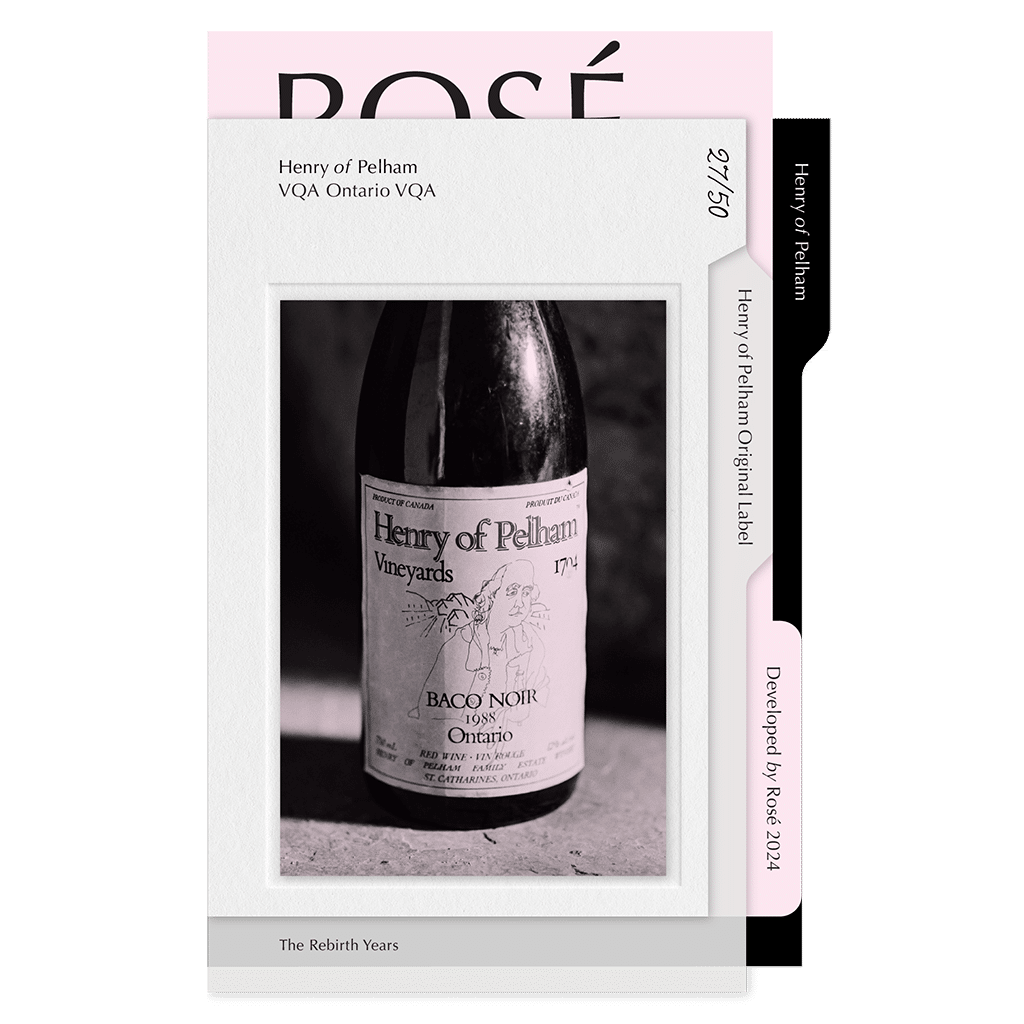


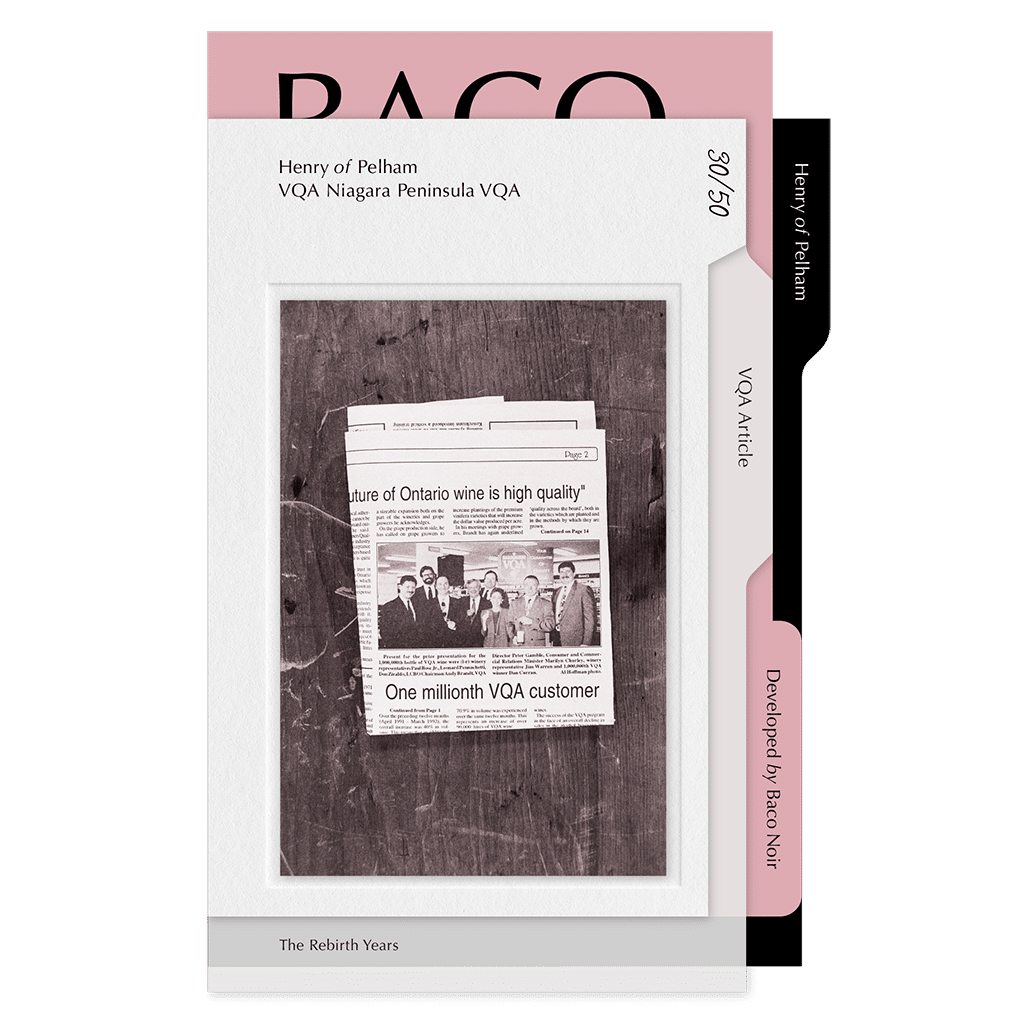
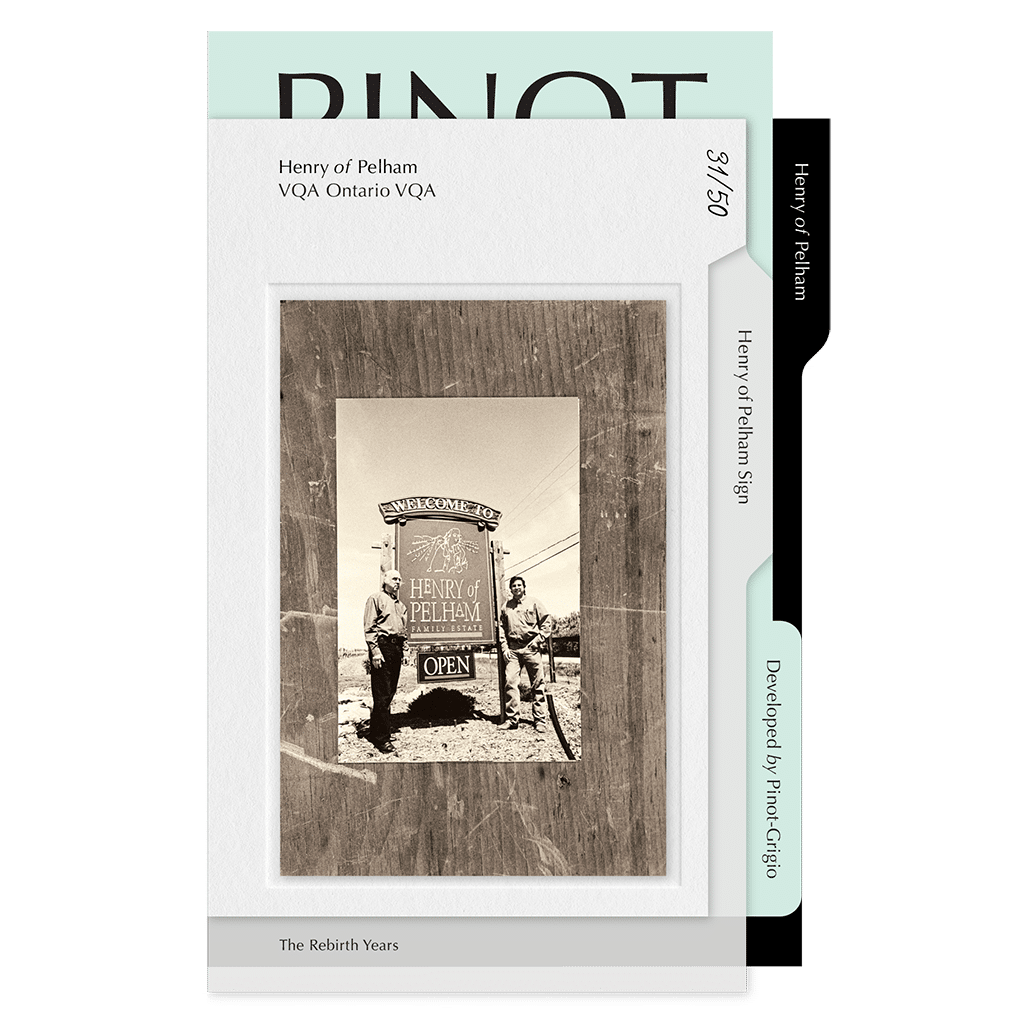
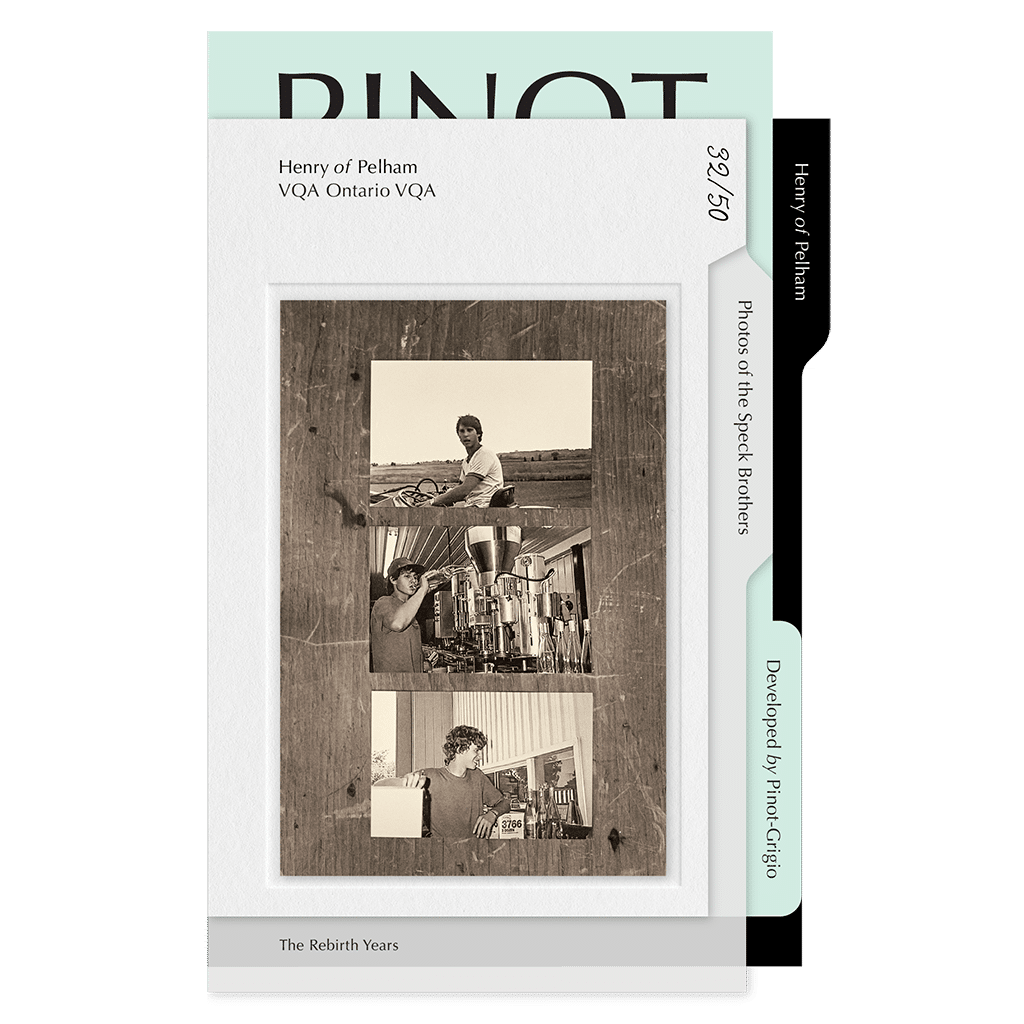

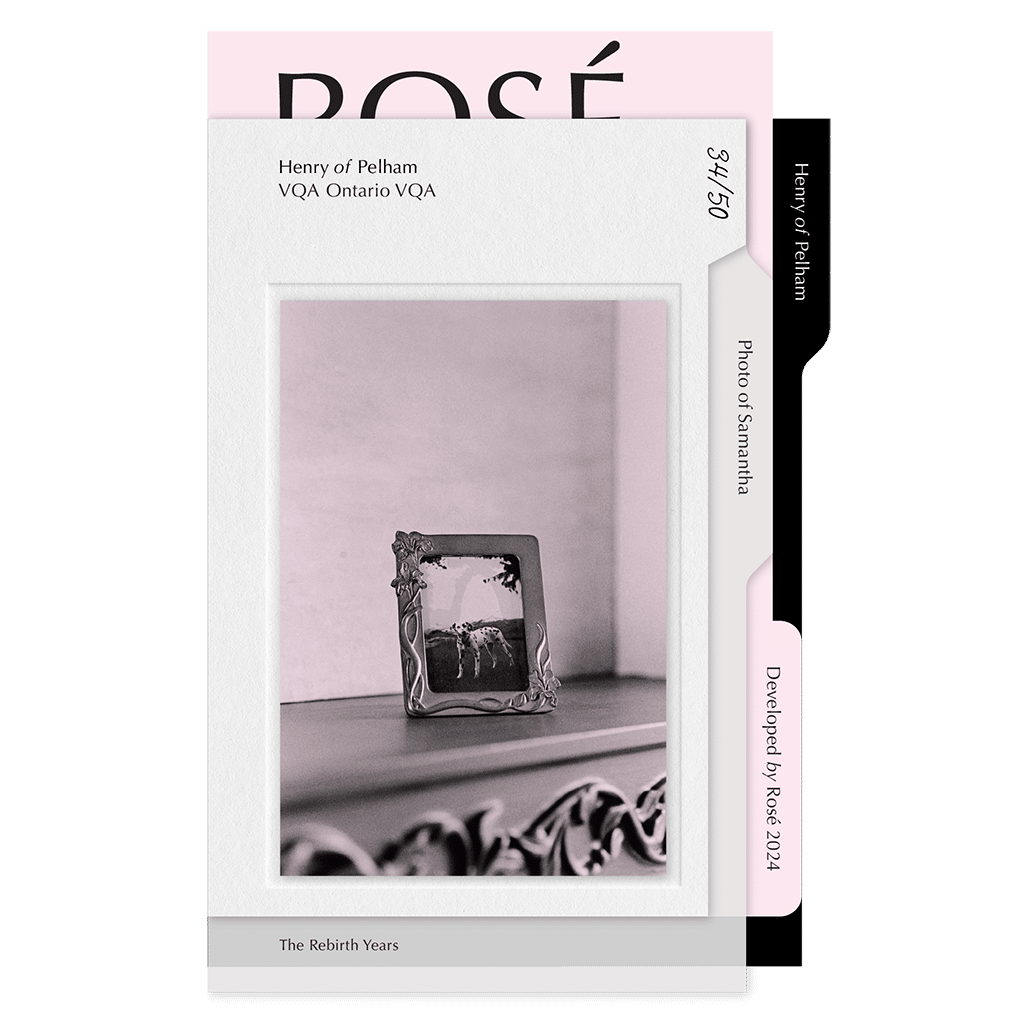

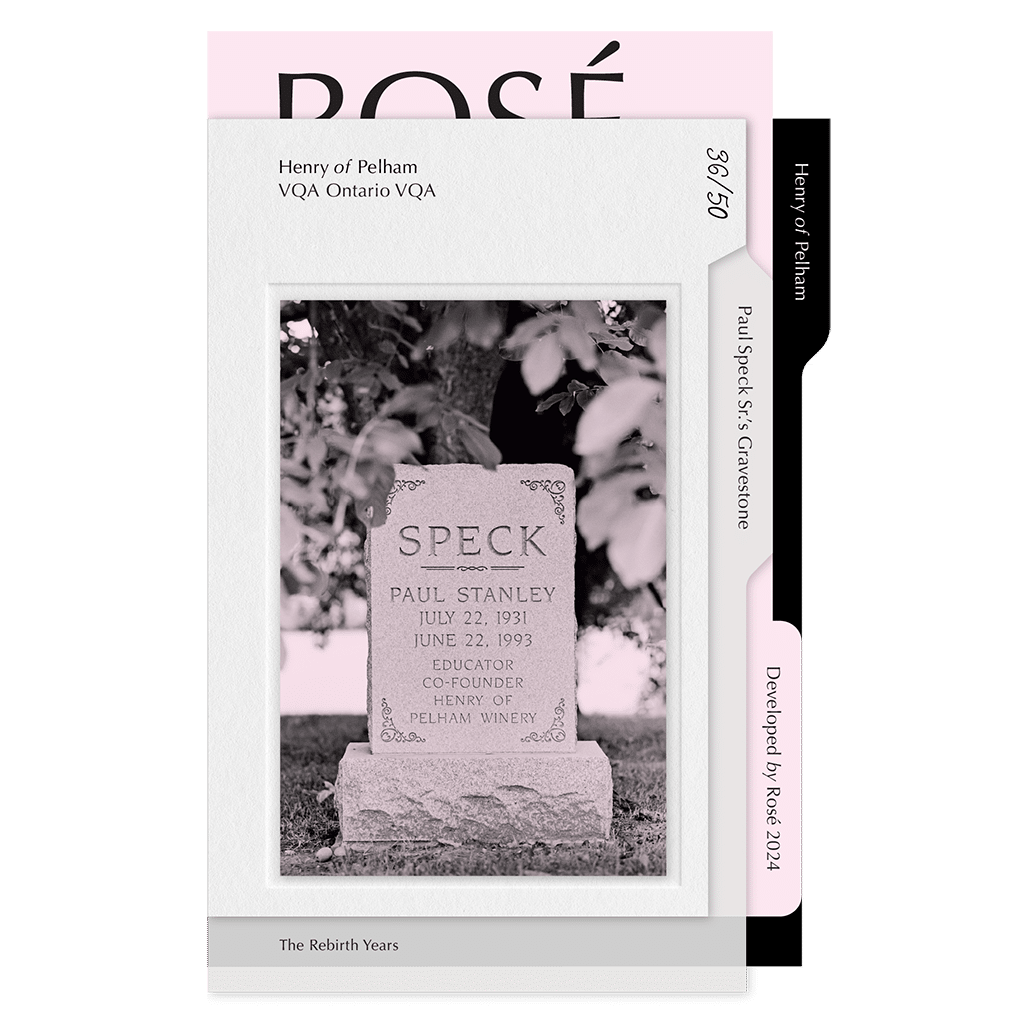
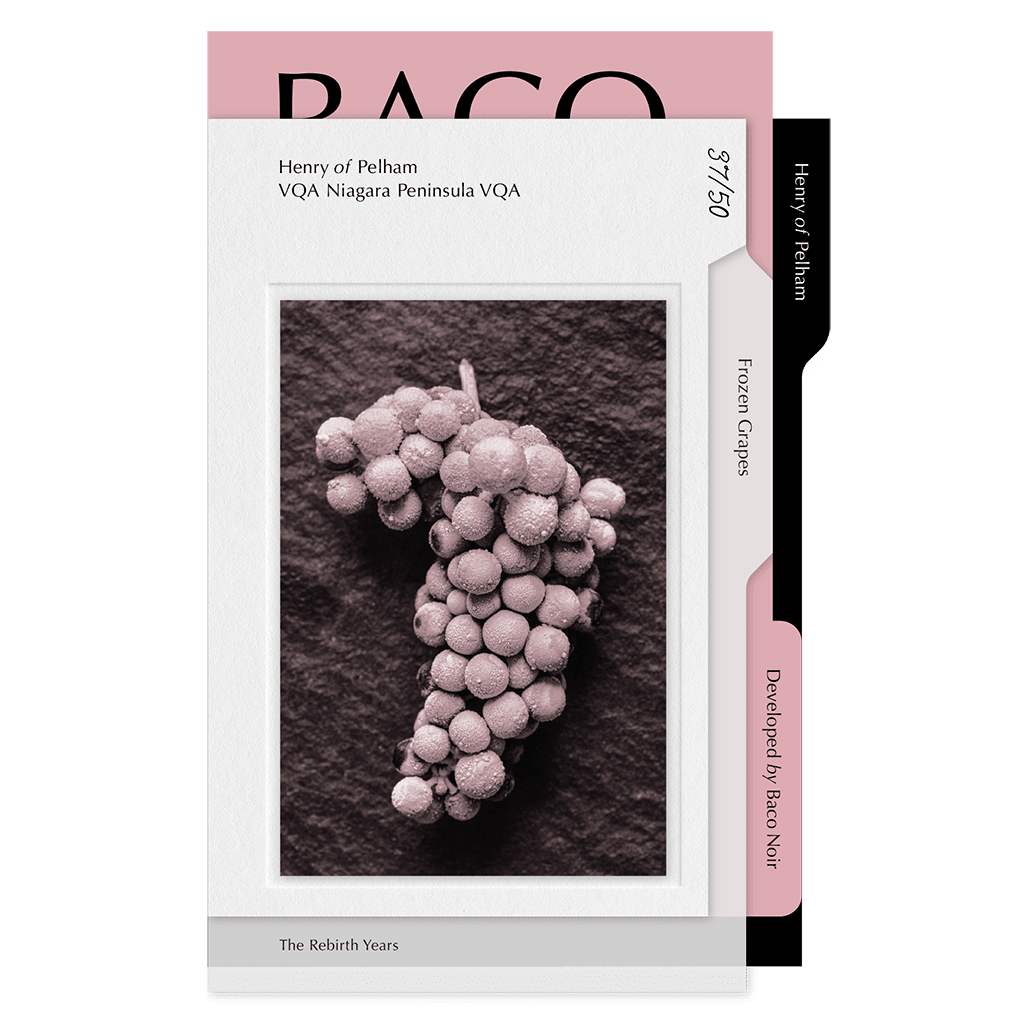
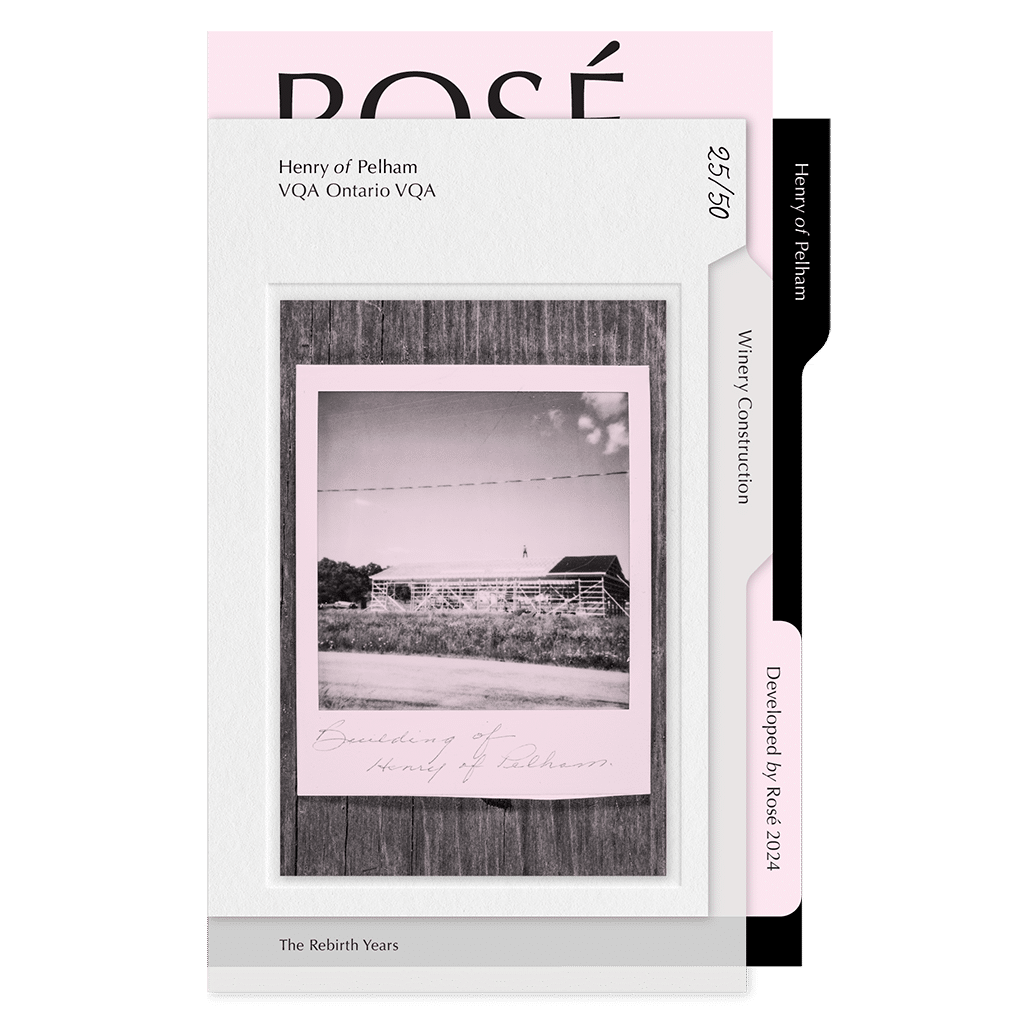

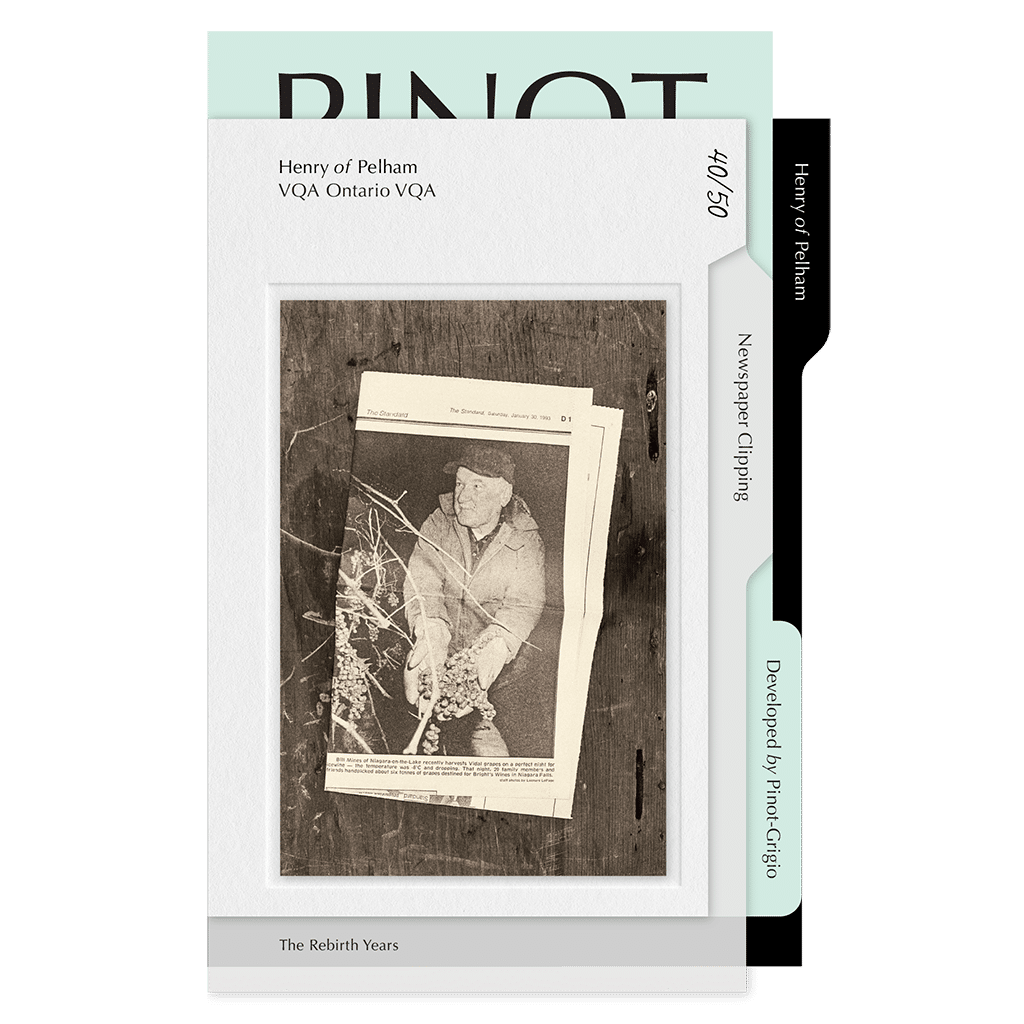

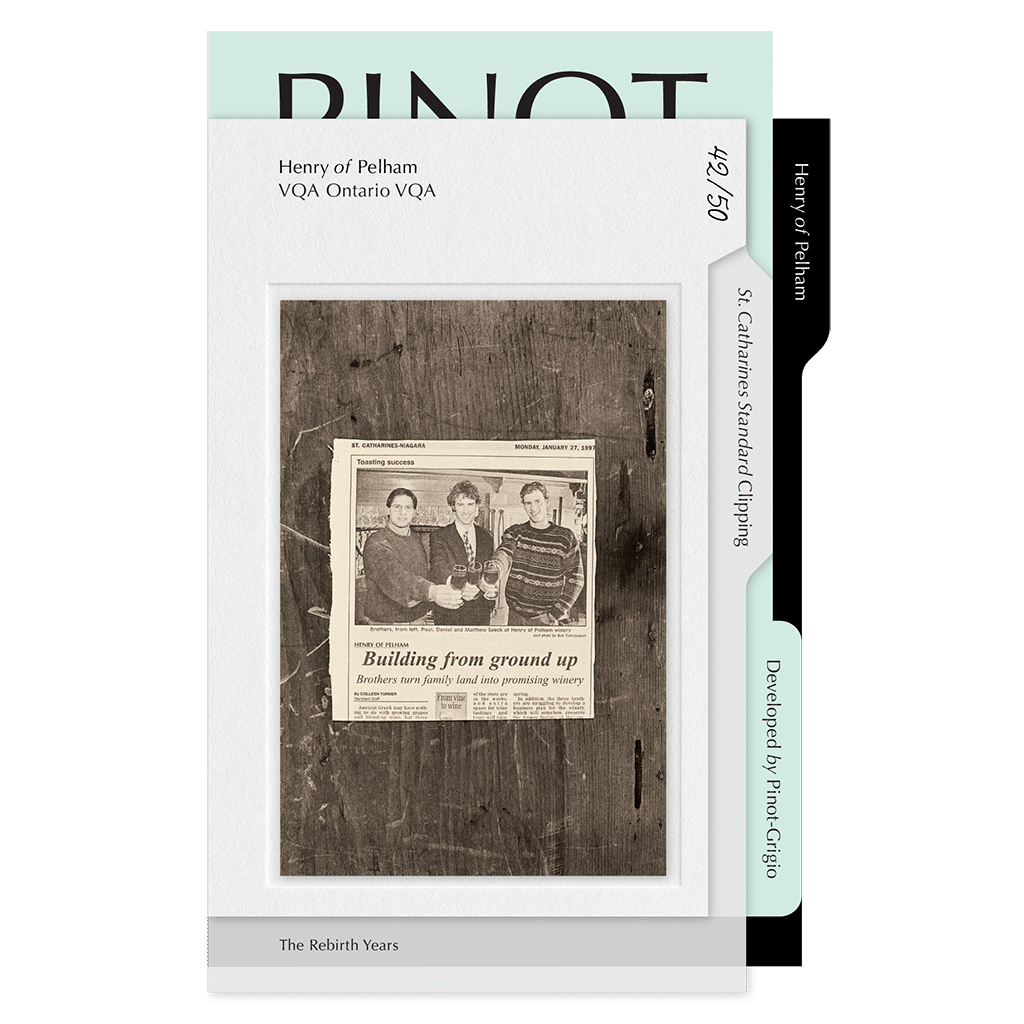
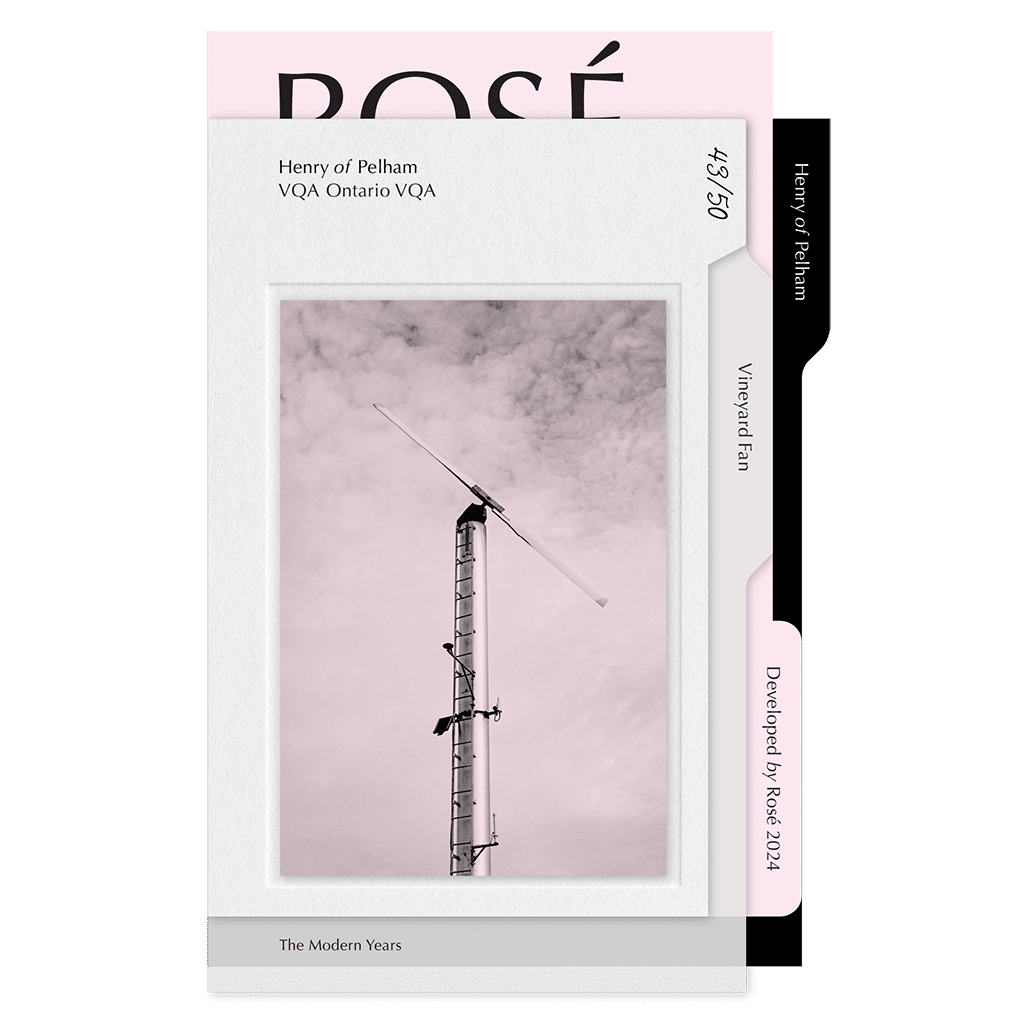


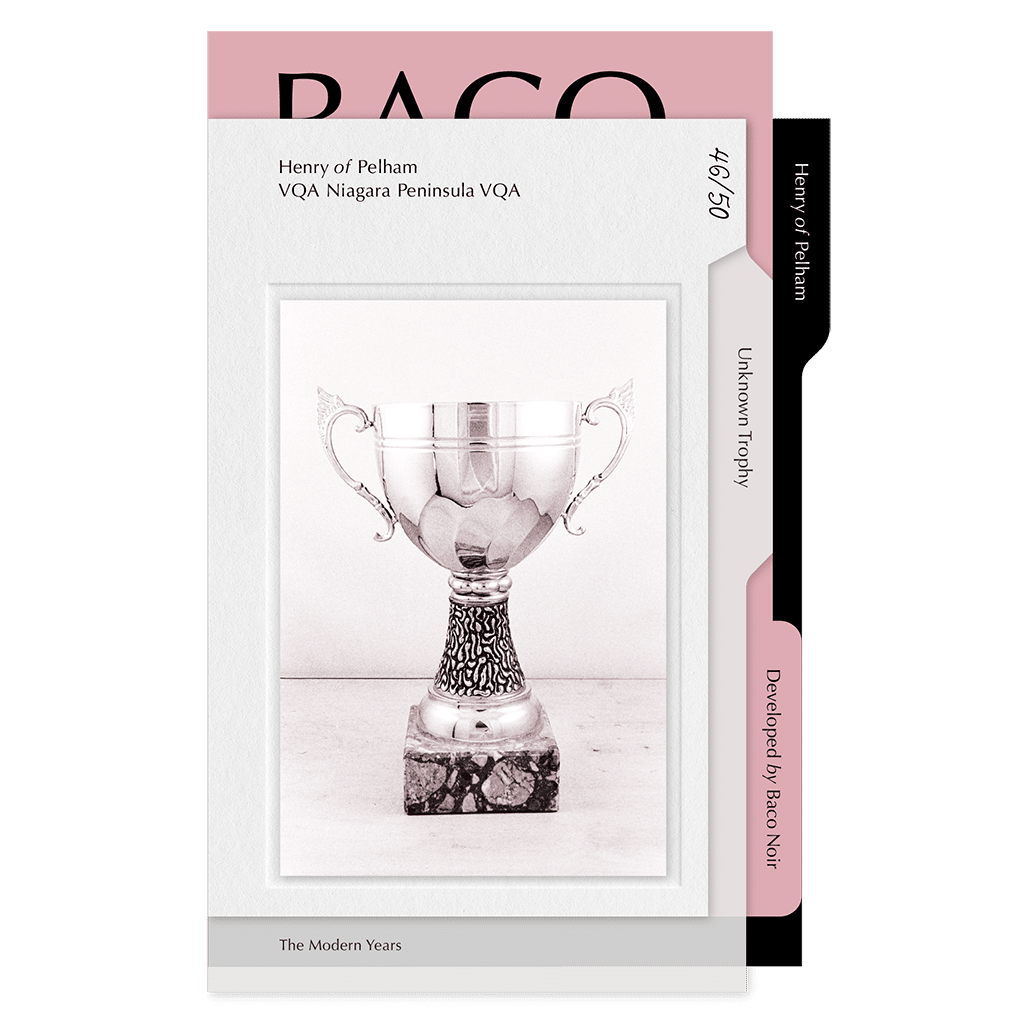
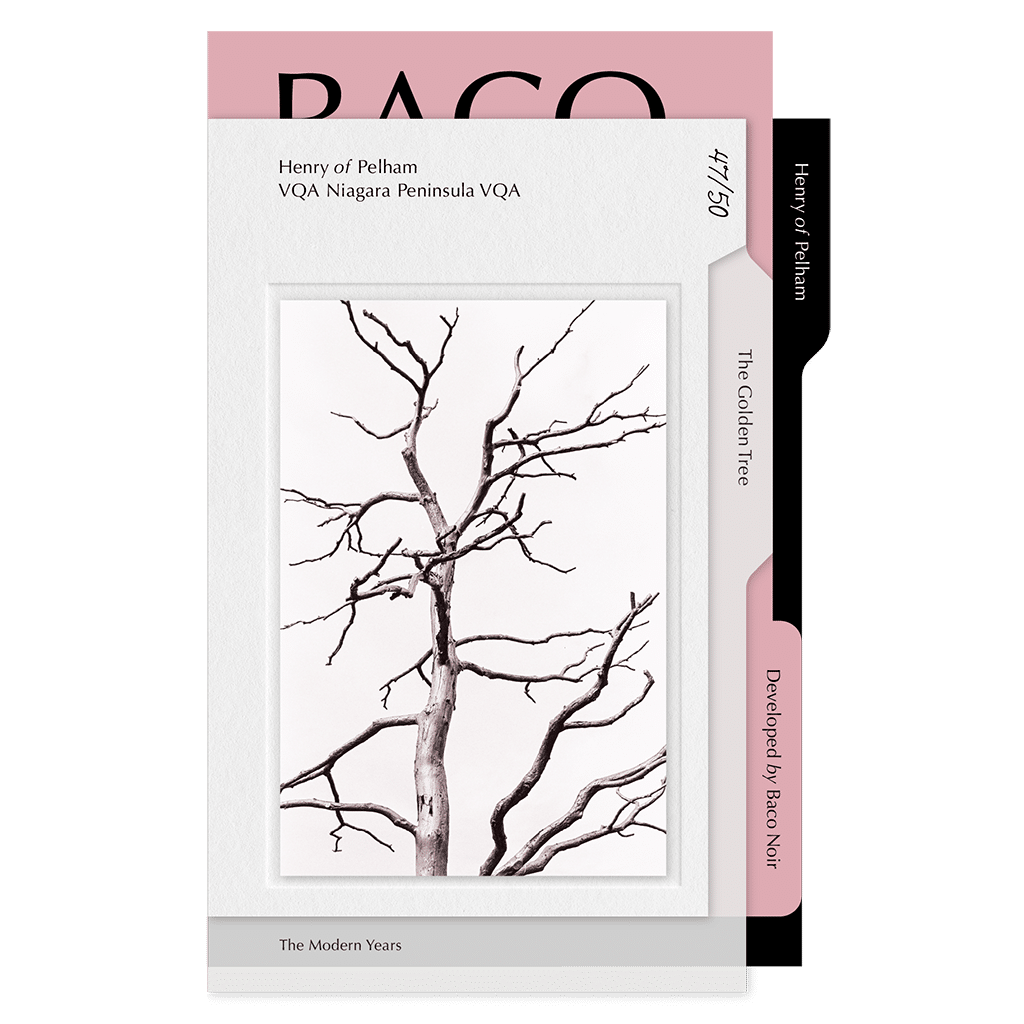

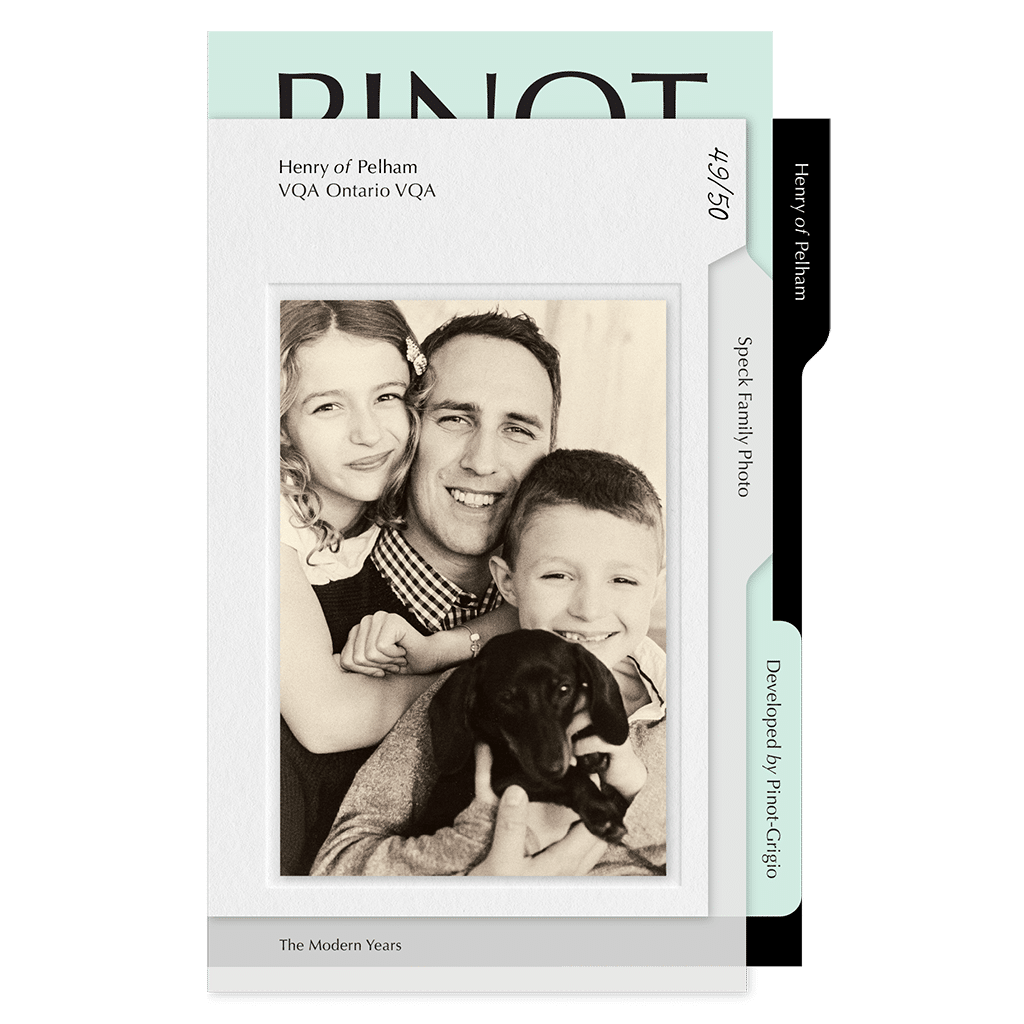
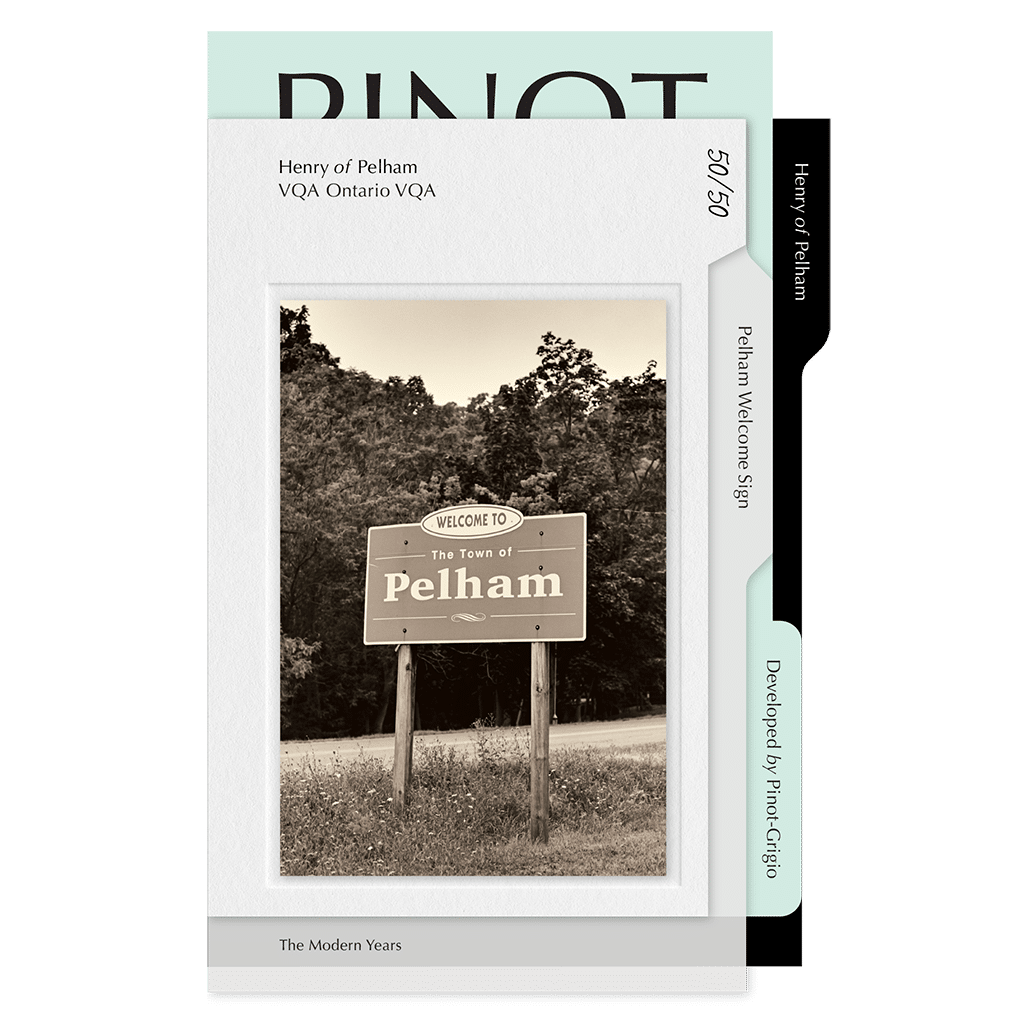

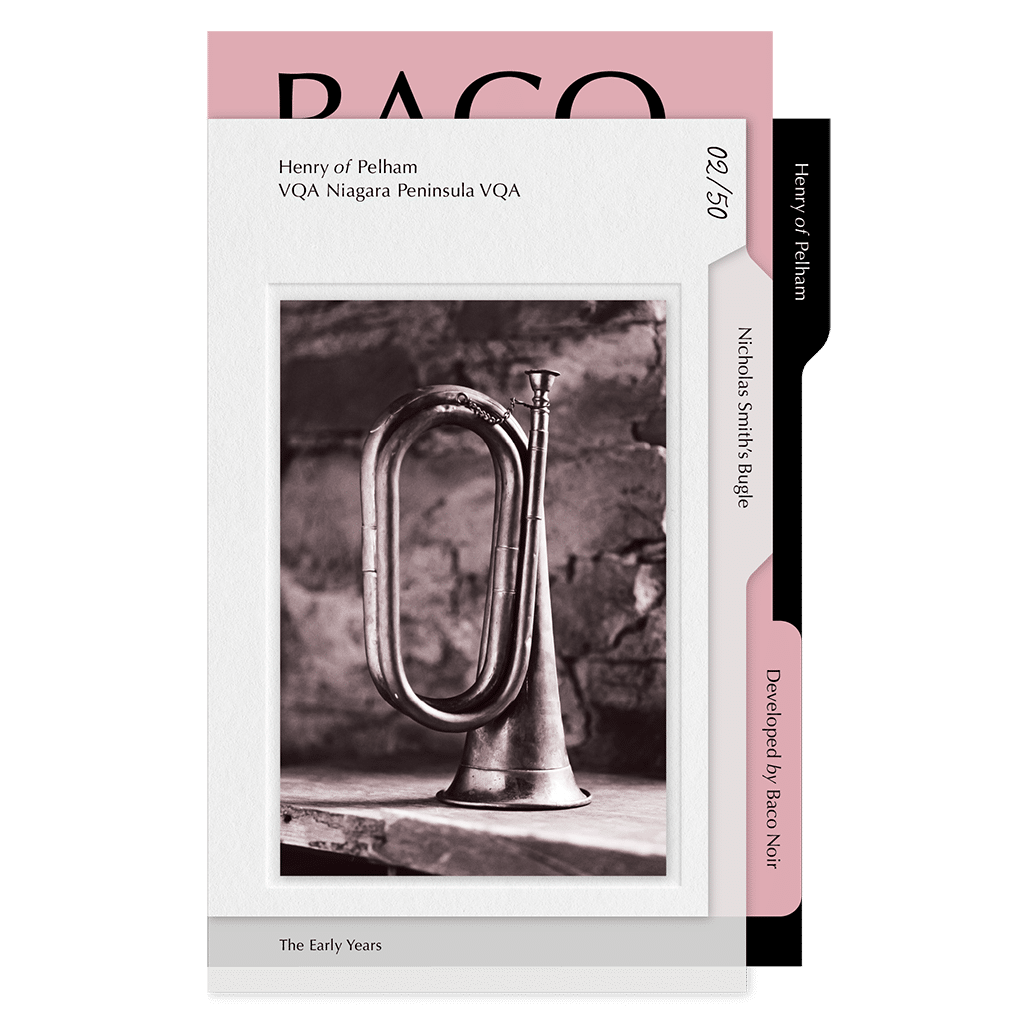
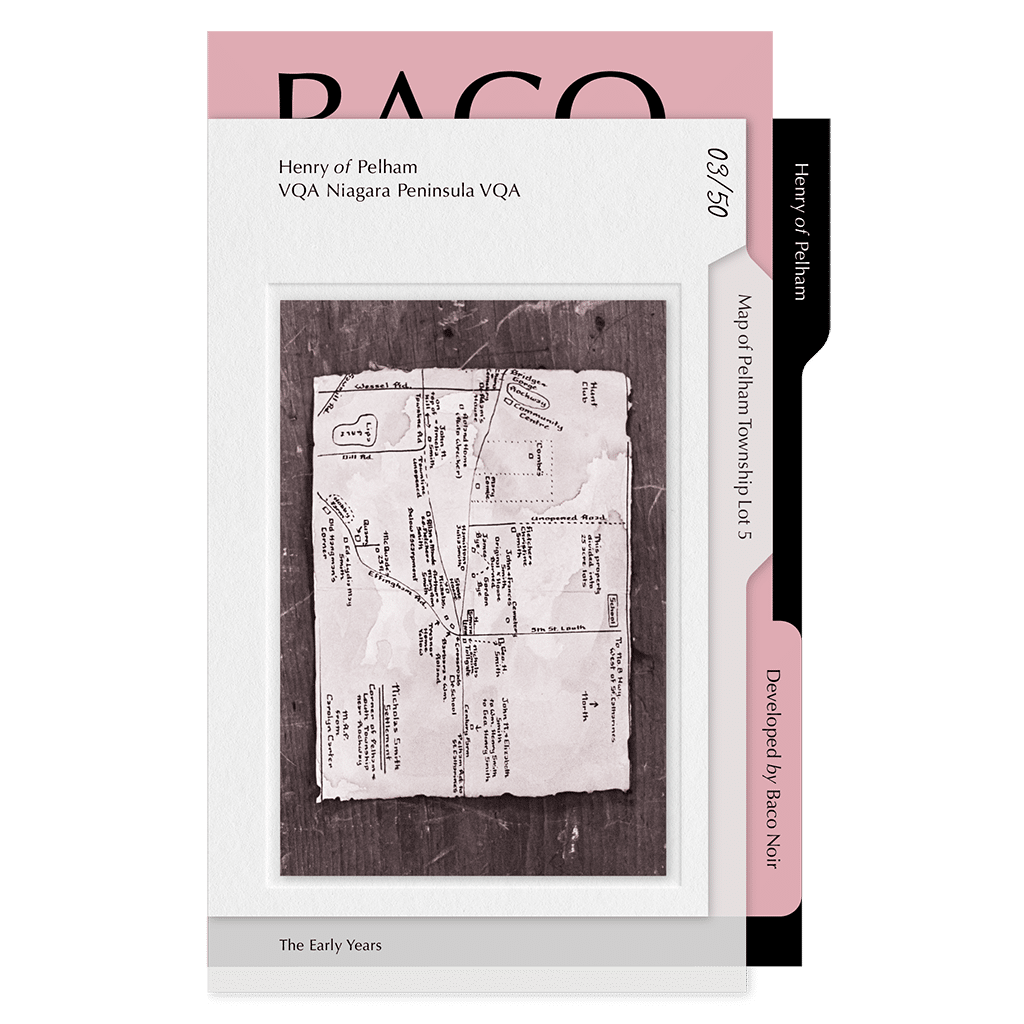

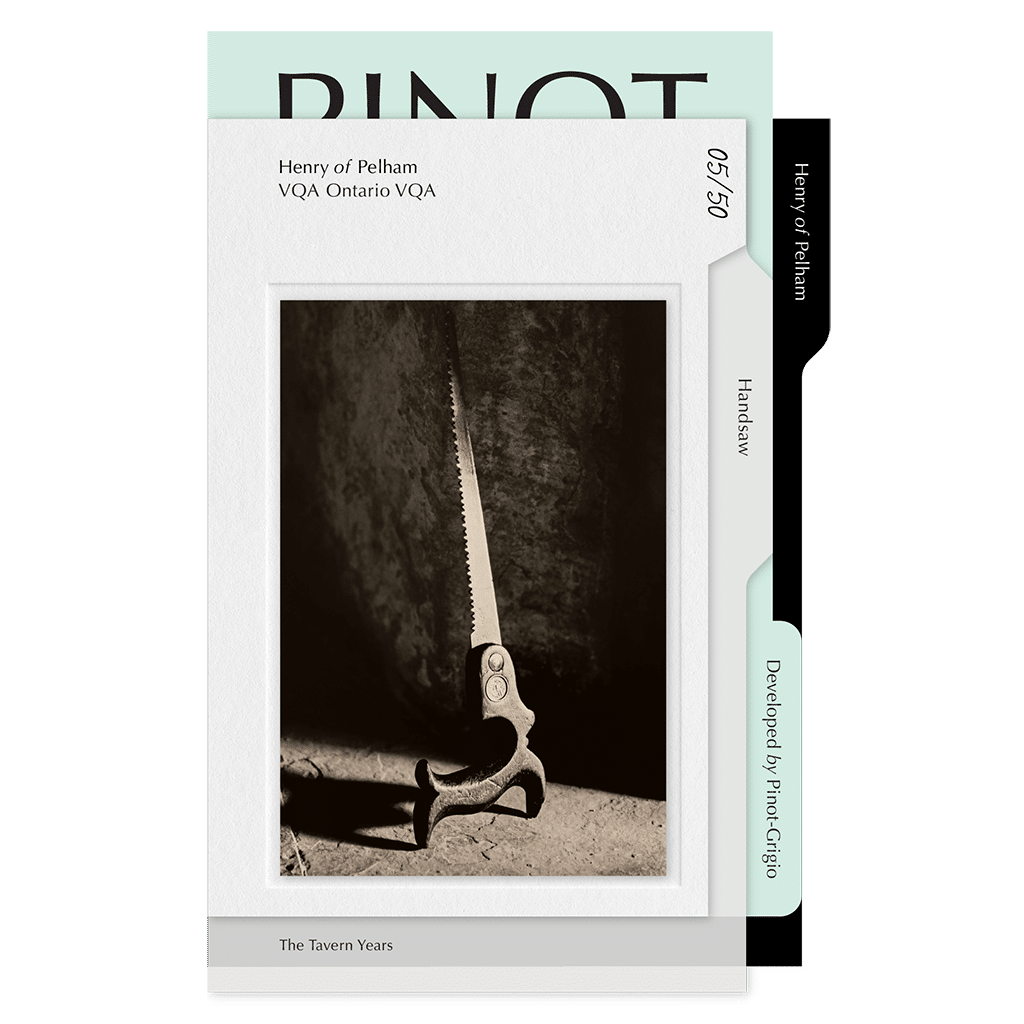
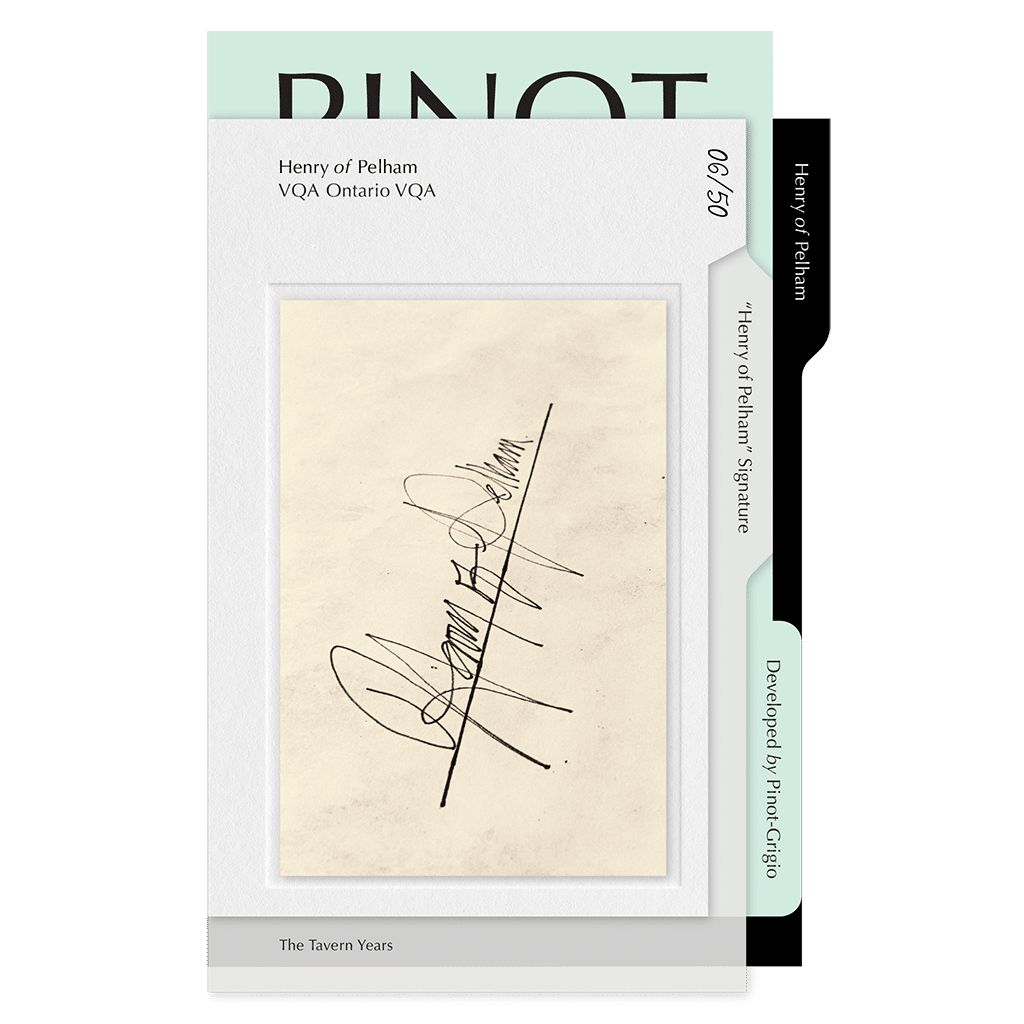
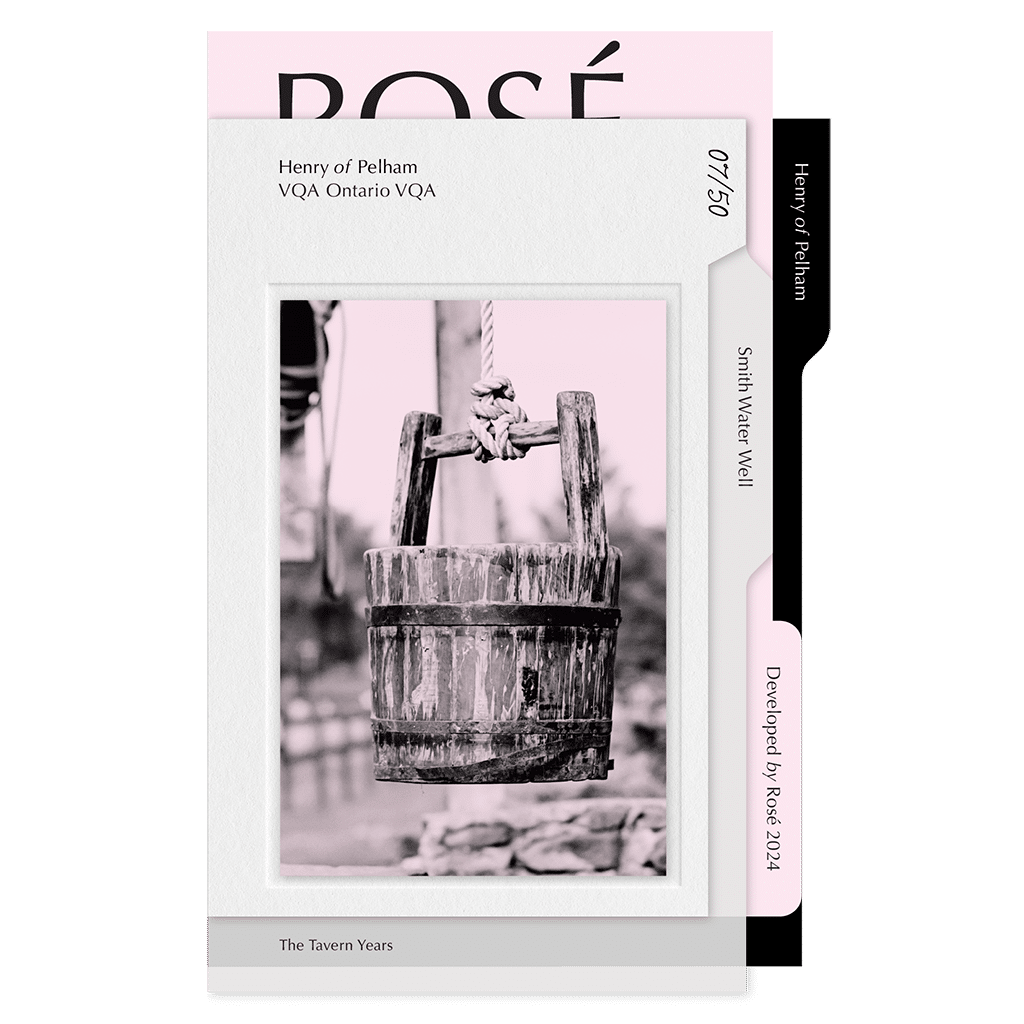

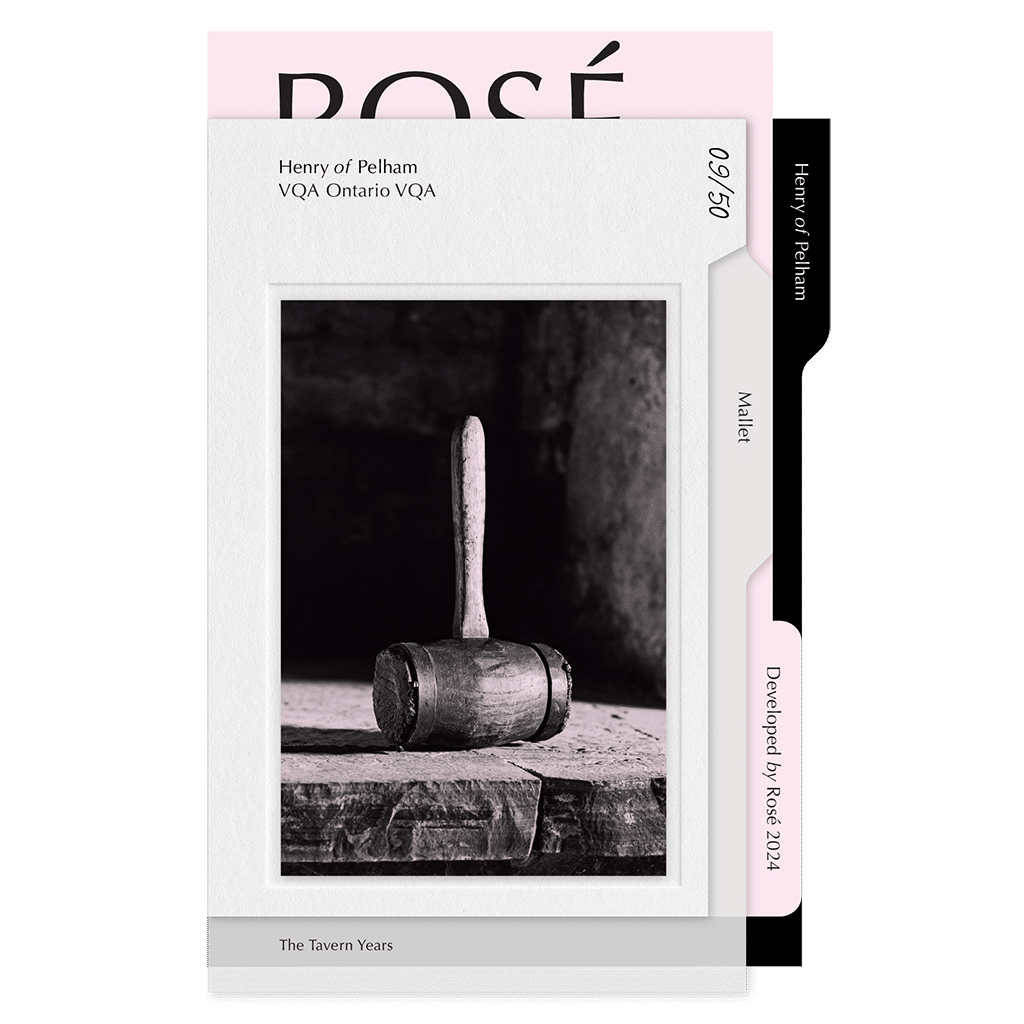
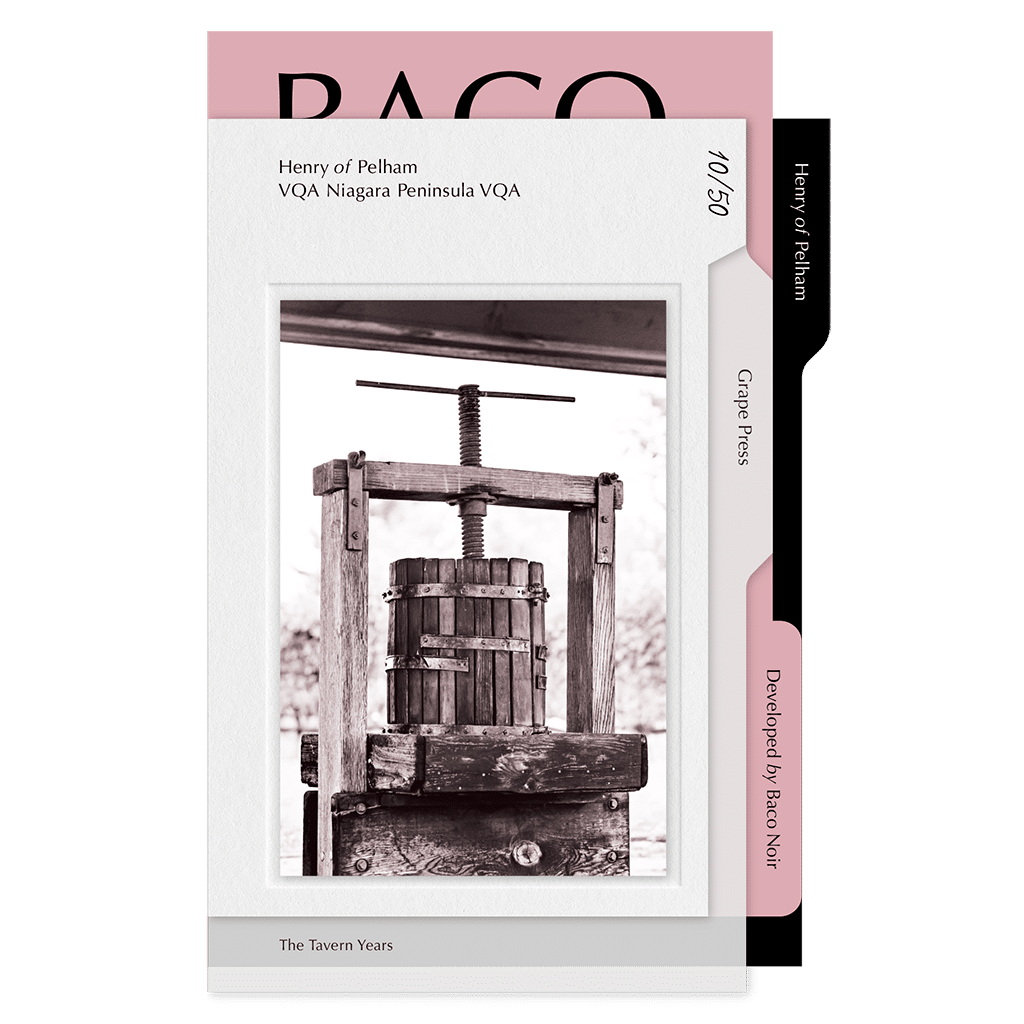

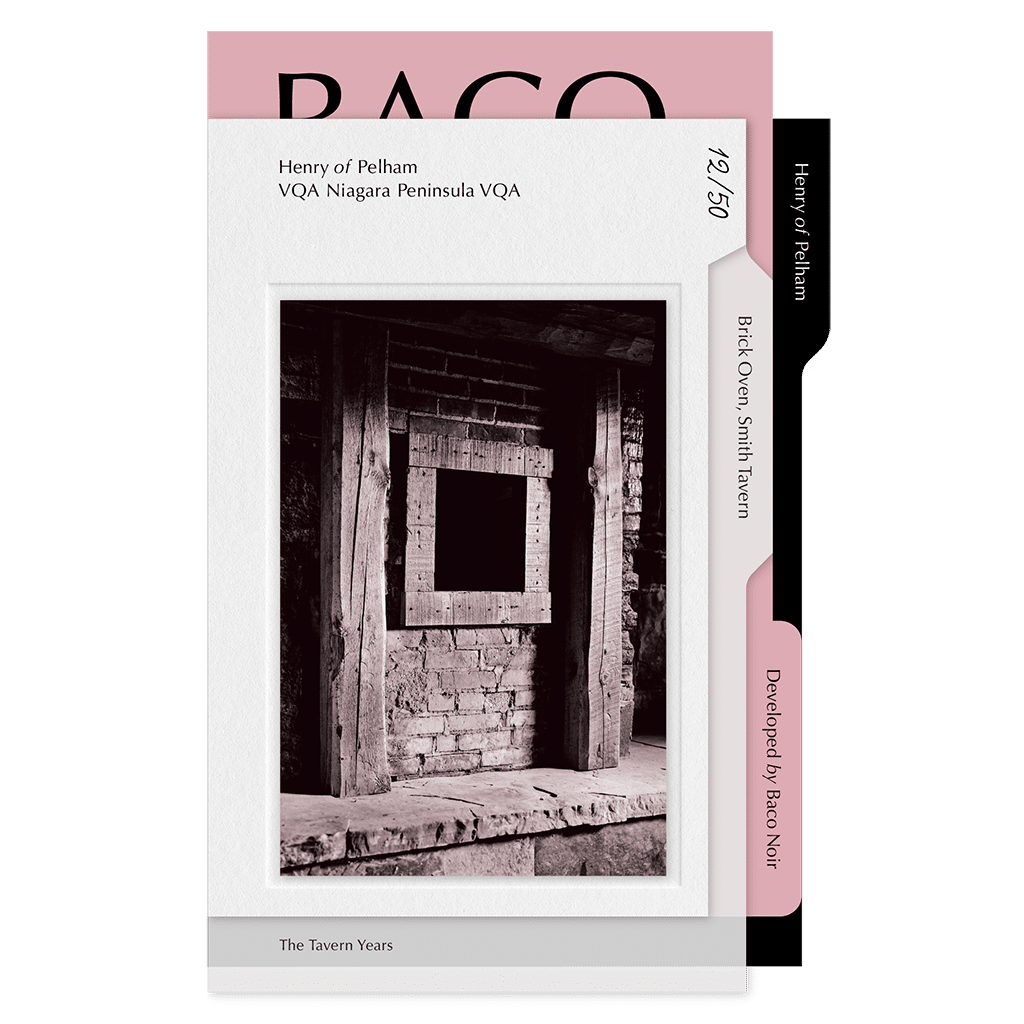
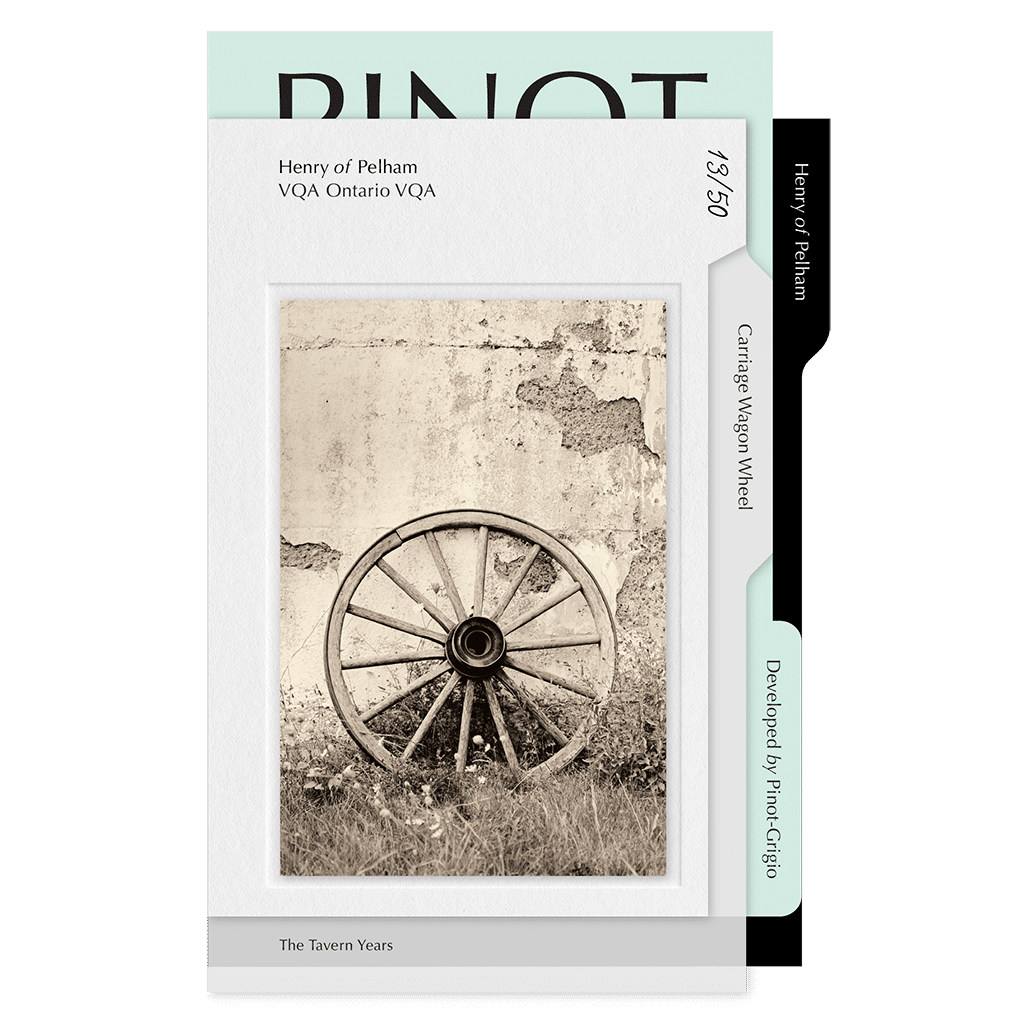
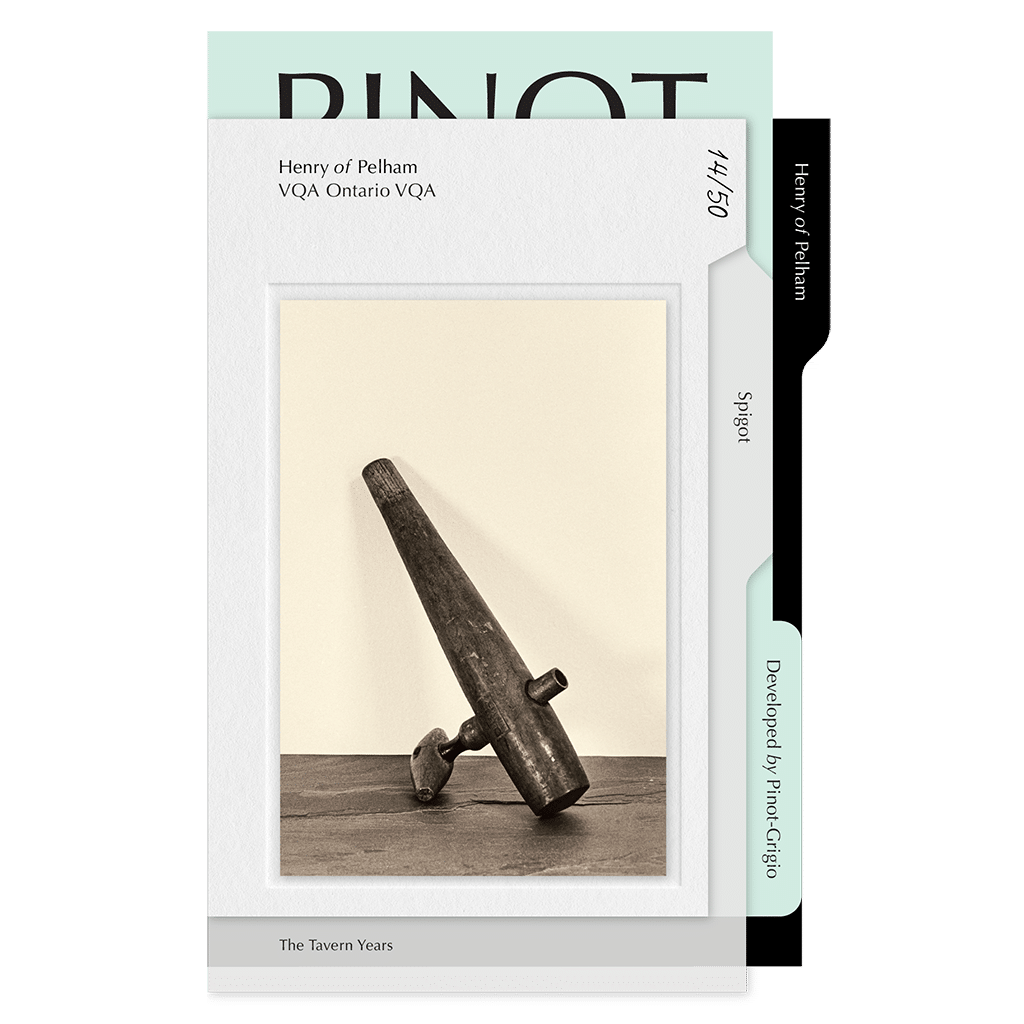
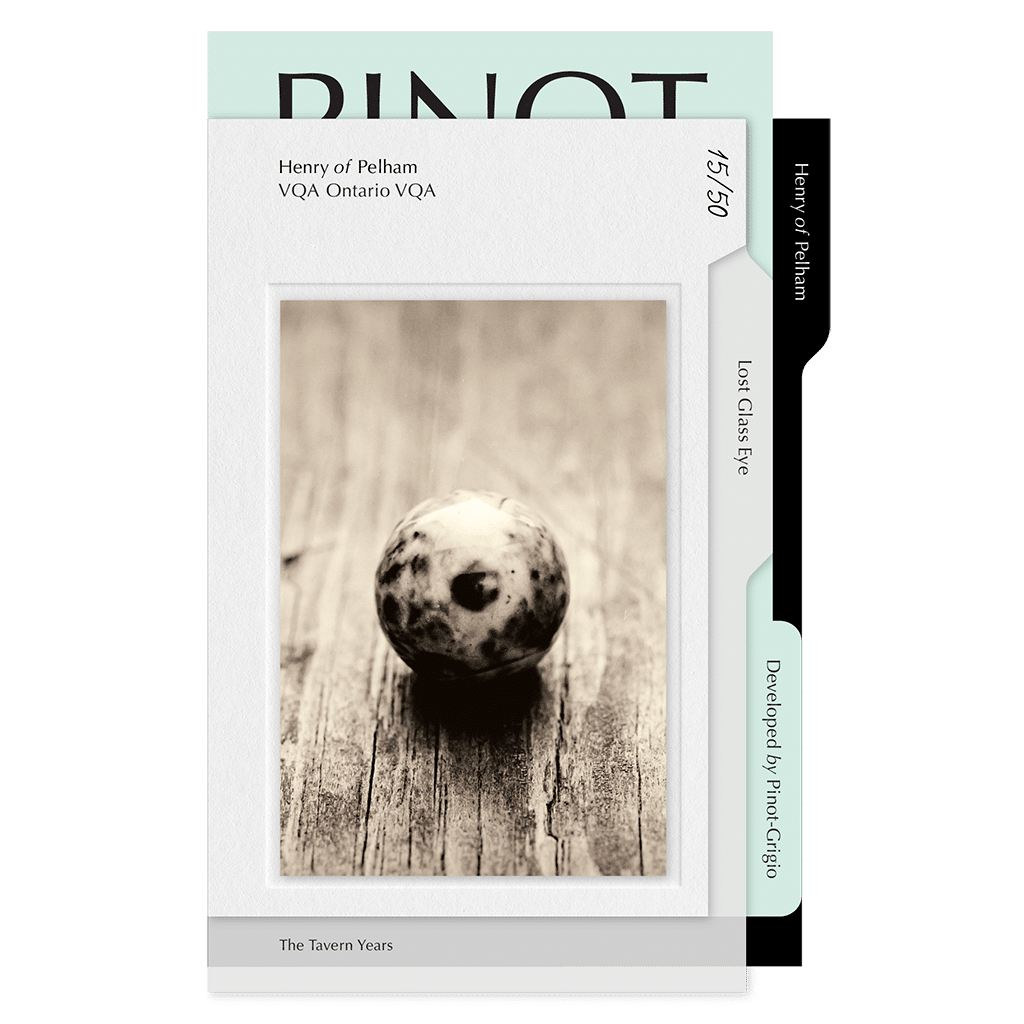

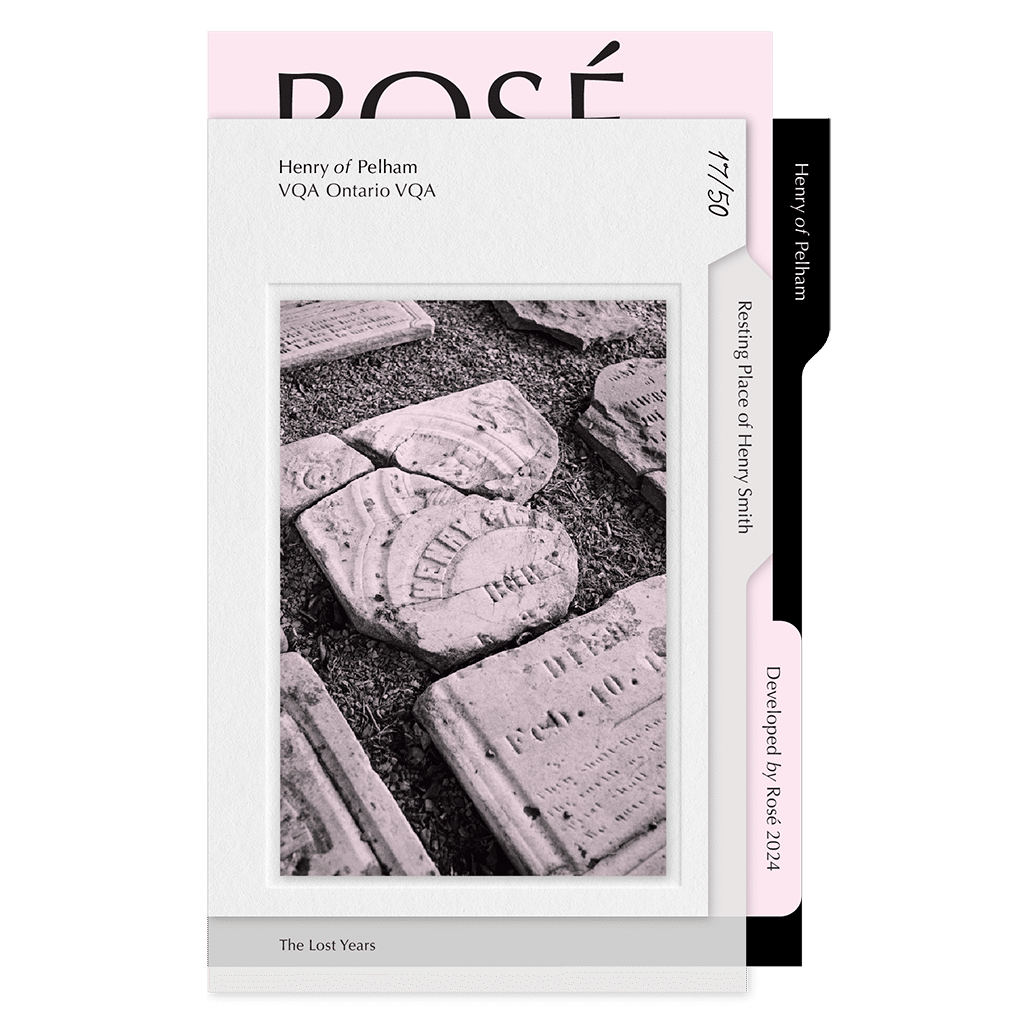

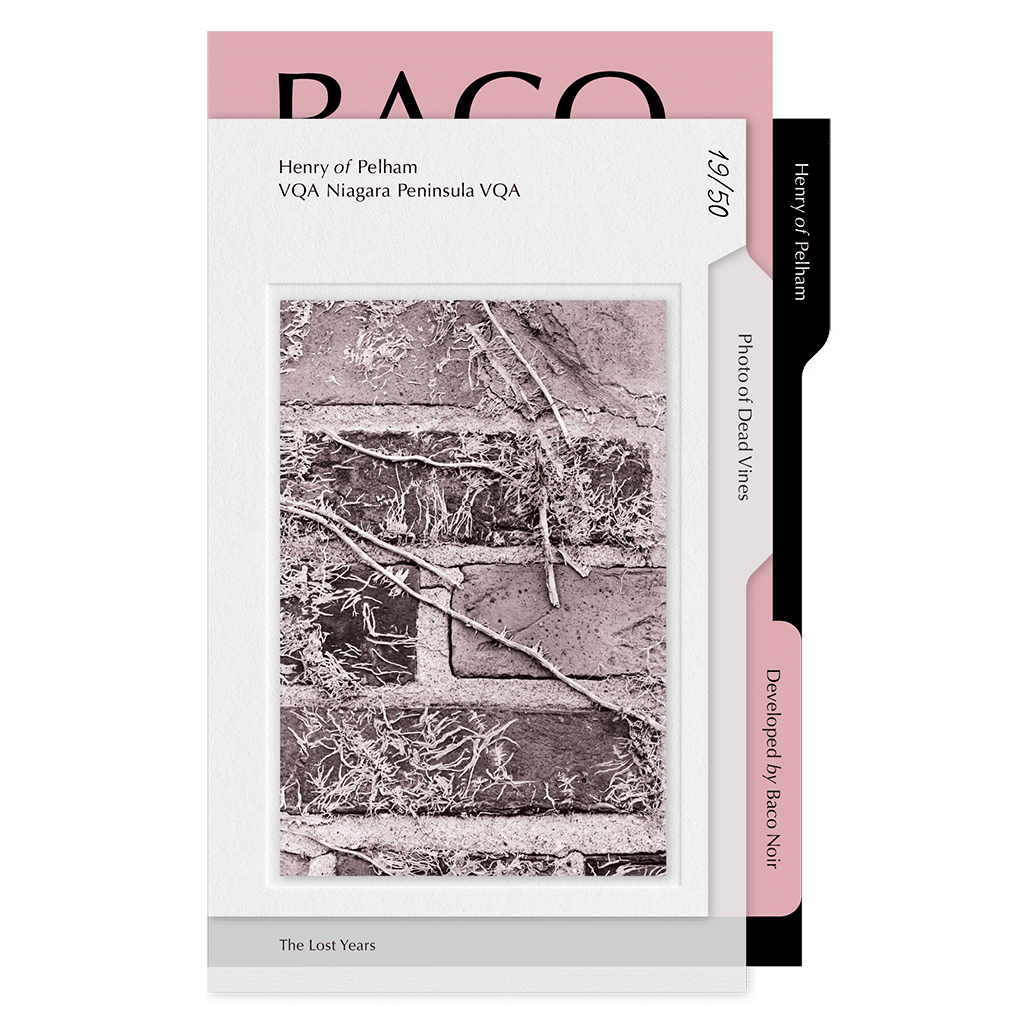



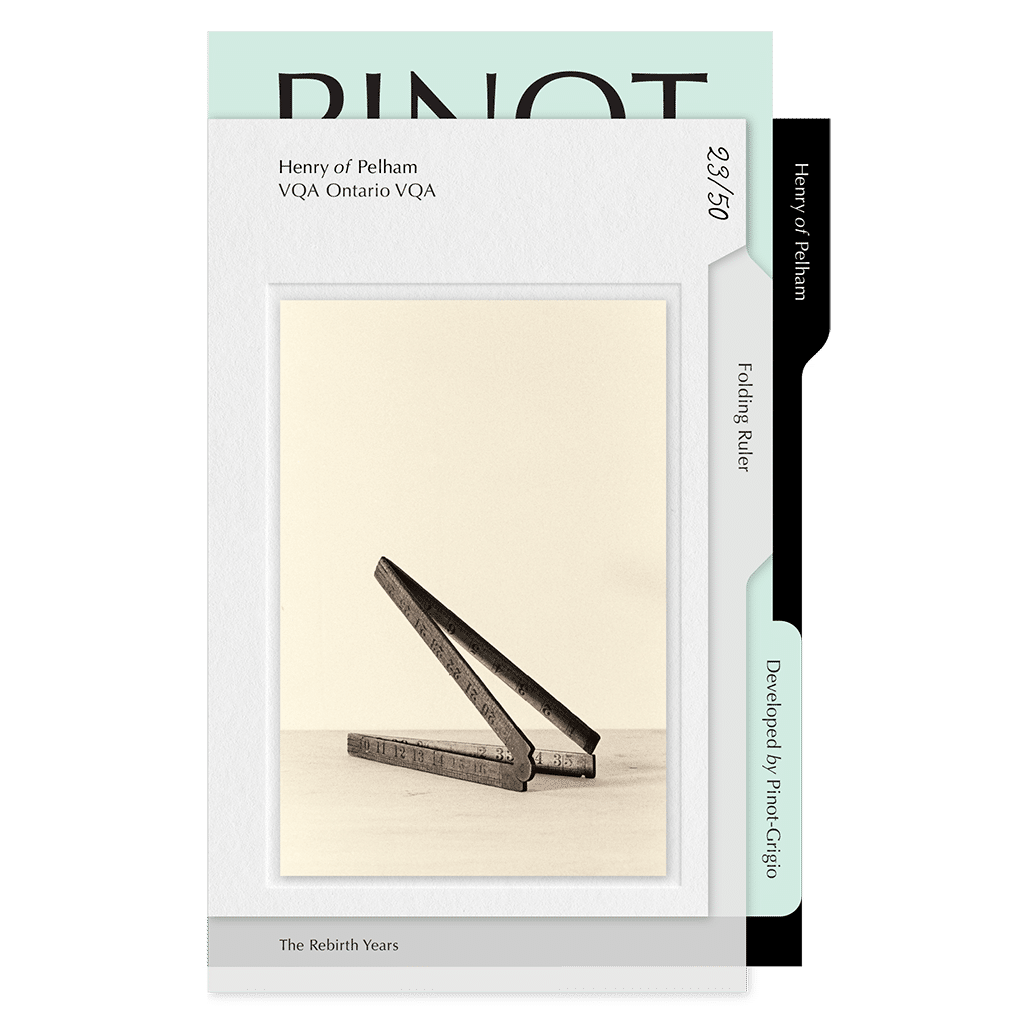
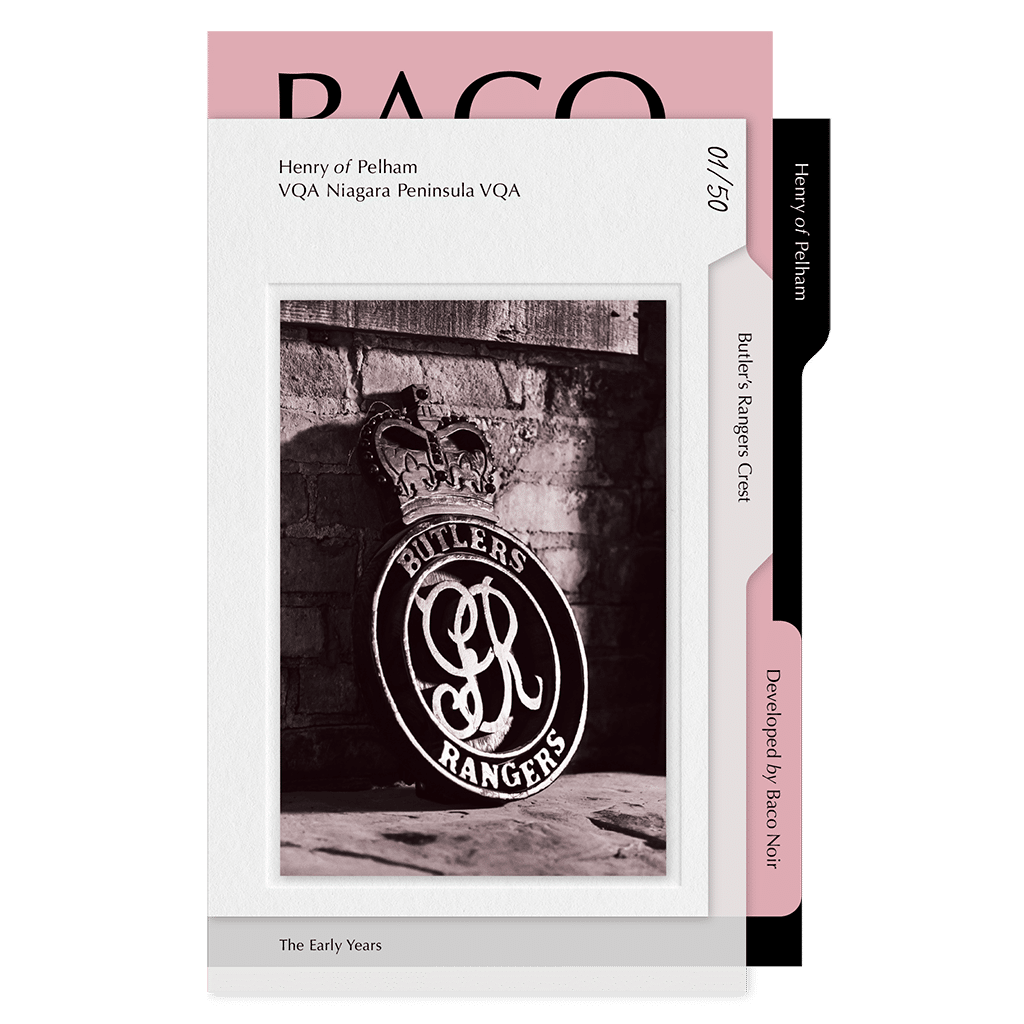
Black Walnuts
Juglans nigra, 1993
The vineyard's flourishing walnut trees are a testament to the Speck brothers’ collective green thumbs. Fortunately for wine enthusiasts, they’ve resisted the temptation to ditch wine for walnuts.
Research Materials
Paper, litho press, 1988
Paul Sr. was a man who knew his calcareous clay from his decomposed granite. All thanks to his fascinating collection of winemaking literature.
Henry of Pelham Original Label
Paper, 1988
Never judge a bottle by its label. Our first foray into graphic design might’ve left much to be desired, but the wine was excellent.
Photo of Paul Sr. & Paul Jr.
Photo paper, wood, 1988
Paul Speck Sr. had his hands full at the vineyard (literally), so he recruited his eldest son, Paul Jr. to help carry the load. All puns intended.
Original Retail Price List
Card stock, 1989
Since Day 1, we’ve offered approachable quality wine at a reasonable price. Nothing pretentious here. Except maybe the font.
VQA Article
Newsprint, 1988
This newspaper clipping may have faded, but its significance hasn’t. Until Paul Jr. co-founded the VQA, Ontario wine was known as “not California” wine. Thanks to the quality standards set by the VQA, it’s now respected not just across North America, but the world.
Henry of Pelham Sign
Film, 1989
A great day for Canada, and Canadian tuxedos, this was the day Henry of Pelham officially opened.
Photos of the Speck Brothers
Glossy photo paper, 1989-90
All three Speck brothers soon got involved in the vineyard, becoming skilful at both winemaking and wine-drinking.
Crooked Vines
Vitis vinifera, 1990
The young Speck brothers accidentally shovel-planted these vines in crooked rows. They remain a literal embodiment of their early learning curve.
Photo of Samantha
Film, 1991
Samantha the dalmatian would accompany Paul Jr. on all official vineyard business. She was paid a salary of kibble and ear rubs.
Pinot Noir Aging Barrels
French oak, 1992
Oak barrels, like these, introduced controlled micro-oxygenation, which softens tannins and refines texture over time. That’s technical wine talk for “delicious”.
Paul Speck Sr. Gravestone
Granite, 1993
After successfully co-founding the Henry of Pelham family winery, Paul Speck Sr. passed away in the summer of 1993, leaving Henry of Pelham in the capable hands of his three young sons, Paul Jr., Matt, and Dan.
Frozen Grapes
Pinot noir varietal, 1993
A mid-March freeze wiped out the grapes and vines in what Paul Speck Jr. calls the “St. Paddy’s Day Massacre.” We still mourn our fallen grapes, but their memories live on.
Winery Construction
Polaroid film, 1987
This rushed photograph captures the construction of our winery. It may have looked like a big box of beams, but it felt like a towering achievement.
Rock, Paper, Scissors
Hands, 1993
When diplomacy failed, the Speck brothers turned to the oldest and most sophisticated governance system known to man: rock, paper, scissors.
Newspaper Clipping
Newsprint, 1993
Another article celebrating the vineyard and proving that our greatness wasn’t entirely in our heads.
End Nippers
Alloy steel, 1995
These pliers gave Dan Speck a permanent crescent-shaped scar across his palm. Proof that the vineyard leaves its impression on more than just the wine.
St. Catharines Standard Clipping
Newsprint, 1997
By the late ’90s the success of the winery gains attention in the local press. Dan learns how to tie a half-Windsor knot specifically for the occasion.
Vineyard Fan
Tubular steel, 2005
Winemaking in Canada has its unique challenges. Hence, the need for this elaborate fan that protects the vines from freezing their grapes off.
Underground Barrel Cellar
Aged oak, 2008
A wine lover’s dream basement. With better temperature control and more space, our state-of-the-art cellar was a huge upgrade in every way.
Tomas & Shovel
Wood, stainless steel, 2011
Unofficially, the fourth Speck brother. Not only has he been a hardworking part of the vineyard for 32 years, Tomas knows all the family secrets. We couldn’t get rid of him even if we wanted to.
Unknown Trophy
Gold plate, 2012
An unidentified award, discovered in Paul Speck Sr.’s storage unit. Whether it was for wine, gardening, or storage-unit organization, we’ll never know.
The Golden Tree
Gold paint, wood, 2020
After a particularly biblical summer storm claimed its life, the Speck brothers preserved this decades-old tree in gold, symbolizing their commitment to their historical land. You can’t tell from the black and white photo, but trust us, it’s beautiful.
Baco Noir, Salmon, Maple Syrup
Mixed media, 2023
Three Canadian staples. Four, if you include the serving board, made by Dan’s brother-in-law.
Speck Family Photo
Film, 2024
Since taking over the vineyard, the Speck brothers have raised their own kids, who they hope will run Henry of Pelham someday. No pressure.
Pelham Welcome Sign
Aluminum, wood, 2025
This road sign is a daily reminder of all the support the town of Pelham and all Pelhamites (Pelhamers? Pelhaminians?) have bestowed upon our family, and our vineyard.
Photo of Paul Speck Sr.’s Hands
Film, 1987
These are the hands that brought our wine into the 20th century. Paul Sr. may have forfeited his dreams of being a hand model, but it was worth it.
Nicholas Smith’s Bugle
Hammered brass, 1788
Nicholas Smith was the 18th-century Beyoncé of bugle boys. His #1 fan? The King himself, who awarded him and his family 100 acres of Niagara land, where the seeds of Henry of Pelham would soon be planted.
Map of Pelham Township Lot 5
Linen paper, 1794
Owned by Nicholas Smith, this humble map identifies the lot that would become our winery. No pinch-to-zoom or street view. Just paper, ink, and excellent penmanship.
Tavern Brick
Clay, chalk, 1838
Some young men dream of becoming astronauts. Henry Smith dreamt of becoming a bartender. He turned that dream into a reality by hand-building a clay-brick tavern on the Smith family property.
Handsaw
Iron, cedar wood, 1842
Wielded by the Smith family to build their family inn, this handsaw recalls the blood, sweat and tears that go into making our wine. Not literally, of course.
“Henry of Pelham” Signature
Gall ink, paper, 1842
Henry signed his tavern license “Henry of Pelham”, a joking reference to the long-passed British prime minister. Nobody knows if the inspector laughed, but the joke lives on, 200 years later.
Smith Water Well
Oak, limestone, iron, 1842
Long before automated sprinklers, this well was essential to vineyard life, quenching thirsts both human and grape.
Guestroom Key
Rolled iron, 1842
The original Airbnb, the Smith family inn always offered its guests a 5-star stay. And fresh towels.
Mallet
Beechwood, cast iron, 1842
Running a tavern is all about harmony and discipline. Knowing that, Henry Smith used this trusty hand mallet as a gavel to settle contentious bar debates or deliver gentle head bonks to unruly guests.
Grape Press
Maple, hammered steel, 1842
Early torture device or grape press? Both. Not only was it strong enough to crush grapes, it was squeaky enough to wake the neighbours.
Cork Floorboard detail
Cork, white pine, 1843
Sustainability wasn’t a word in 1843, but we were into it anyway. Repurposing corks to repair floorboards.
Cork Floorboard detail
Cork, white pine, 1843
Grandfather to the air fryer, this humble hand-built oven helped Henry produce the crowd-pleasing pairings that enhanced the flavours of the wine.
Carriage Wagon Wheel
White maple, 1844
Back when horses qualified as designated drivers, wheels like this guided carriages of thirsty patrons to Henry’s tavern. No matter how you get here, we’ve always made sure it was worth the trip.
Spigot
Wood, metal, 1846
Dispenser of wine and often misspelled word, this spigot controls the flow of wine from the barrel, and minimizes oxygen exposure. Silly word. Big responsibility.
Lost Glass Eye
Cryolite glass, 1848
This mysterious glass eye was an early resident of Henry’s lost-and-found, bearing witness to the pouring, laughter and stories that shaped our wines.
Old Coins
Copper, silver, 1849
Sixty cents bought you a bottle of red at Henry’s tavern. Today, the price has risen, but the dedication to good wine at a fair cost hasn’t faltered. Inflation be damned.
Resting Place of Henry Smith
Engraved limestone, 1856
Henry Smith passed away February 10, 1856. But his spirit, and his name, live on with every bottle of Henry of Pelham.
Abandoned Shed
Oak, ironwork, 1870s
Still standing at the vineyard today, Henry’s abandoned shed has yet to be reopened. Partially because we can’t pry the door open. Partially because we’re afraid of spiders.
Photo of Dead Vines
Gelatin silver print detail, 1870s
Henry’s original grapevines, months after the Smith property is sold off. These same vines would later be cultivated to restore the family vineyard.
Old Portrait of Ernie Speck
Paper, wood, glass, 1956
Ernie Speck worked as a dogcatcher, teaching his son, Paul Speck Sr. how to tame the seemingly untameable. A skill that would translate surprisingly well when reviving the derelict vineyard that became Henry of Pelham.
Lost Horseshoe
Hammered steel, 1979
Decades earlier, a horse misplaced its shoe while visiting Henry’s tavern. Luckily, the horse never came back to claim it, allowing it to bring the good luck needed for Paul Speck Sr. to turn the vineyard’s fortunes around.
Photo of Paul Sr. and Bronte
35 mm colour film, 1983
Descendent of Henry Smith, Paul Speck Sr. was a man with an endless capacity for care. A lover of dogs, family, the vineyard, and evidently, ’80s fashion.
Folding Ruler
Wood, metal, 1986
As an educator, Paul Speck Sr. used this ruler to teach geometry. As a winemaker, he used it to measure vines. Precision mattered in both the classroom and the vineyard.
Butler’s Rangers Crest
Cast Bronze, 1787
As a soldier with Butler’s Rangers, Nicholas Smith was brave, courageous and quick with a musket. All skills his son Henry inherited, and put to good use planting some of Canada’s first vineyards. Minus the musket part.
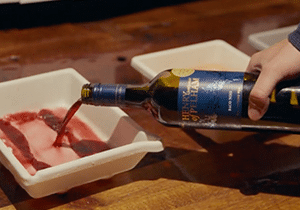
About Wineol
Wineol is an alternative film-developing method that uses wine instead of conventional photographic chemicals. The acids and tannins in the wine, when combined with vitamin C and washing soda, create a developer strong enough to bring out images on black-and-white film or photographic paper. It’s basically an experimental way to process film using everyday materials, with wine standing in for harsher lab chemicals. Any varietal of wine can be used, each giving the finished photo its own unique hue.
1469 Pelham Rd., R.R. #1
St. Catharines, ON Canada L2R 6P7
905.684.8423
winery@henryofpelham.com



